Directory of UK Wealth Managers

-
Min. account size
£500,000 -
Company type
Financial Advisor -
Ownership
Private Limited Company -
Size of wealth manager
Small -
Size
UK Wide -
Founded
2010
Book a call with us
One of our team will give you a call at the time selected to discuss your situation and make the introduction to this Wealth Manager on your behalf.
AAB Wealth Factfile
AAB Wealth is a financial planning and wealth management business established over 15 years ago. AAB Wealth work with their clients to build a financial plan that link to their clients’ needs and goals: this may be planning for their retirement, improving their portfolio's tax efficiency, increasing income in retirement, reducing their inheritance tax burden or simply providing a second opinion on their current portfolio and financial plan.
Key person:

James West
Relationship Director
Advisory Investment Management
| Contact | Relationship Manager |
| Fee structure | Annual fee |
| Min. account size | £500,000 |
Financial Planning
| In-house service | |
| Pension advice | |
| Tax efficient investments | |
| How we charge | Flat fee / Per hour |

-
Min. account size
£500,000 -
Company type
Private Bank -
Ownership
Listed group -
Size of wealth manager
Small -
Size
UK Wide -
Founded
1983
Book a call with us
One of our team will give you a call at the time selected to discuss your situation and make the introduction to this Wealth Manager on your behalf.
Adam & Company Factfile
Adam & Company is a private bank, providing a broad range of products and services to their clients, all backed by a commitment to excellent service. Adam & Co. aim is to provide exceptionally high standards of service, attracting people who lead busy lives and are looking for active, careful management of their financial affairs. Their clients include UK residents, expatriates and UK nationals domiciled abroad. They also serve a number of private companies, trusts and charities.
Financial Planning
| In-house service | |
| Pension advice | |
| Tax efficient investments | |
| How we charge | Within account fee |
Discretionary Investment Management
| Contact person | Relationship manager |
| Portfolio types | Model, bespoke |
| Composition | Fund, direct, tracker, mixture, ethical |
Advisory Investment Management
| Contact person | Relationship manager |
| Fee structure | Annual fee |
| Min. account size |
Lending
| Portfolio lending | |
| Mortgages (residential) | |
| Typical minimum mortgage | £1,000,000 |
| Other finance |
Execution-only Investing
| Online dealing | |
| Timezones | |
| Margin accounts |
Other Services
| Retail banking | |
| Ethical investing | |
| Philanthropy |

-
Min. account size
£50,000 -
Company type
Financial Advisor -
Ownership
Private -
Size of wealth manager
UK Wide -
Size
UK Wide -
Founded
2014
Book a call with us
One of our team will give you a call at the time selected to discuss your situation and make the introduction to this Wealth Manager on your behalf.
Amicus Wealth Factfile
Amicus came into being because we believe in a refreshingly different approach to financial planning (and our clients agree). Fundamentally, we believe it’s about making sure your money can help you to do the things you want to. Our aim is to be seen as a highly professional and experienced City firm, providing leading edge, yet proven solutions for our clients – delivered in a relaxed and friendly style.
Most of our clients prefer to see us at our offices in Moorgate, London. That said, we also can visit them at their place of work or via video.
Advisory Investment Management
| Investment classes | Equities, Funds, Cash deposits , Commodities, ETFs, Bonds, Hedge Funds, Derivatives, FX, Structured Products, Private Equity |
| Contact person | Relationship manager, Investment manager |
| Fees structure | Annual Management fee |
Discretionary Investment Management
| Portfolio types | Model, bespoke |
| Portfolio composition | Fund based, direct securities |
| Minimum size account for bespoke portfolio | £500k |
| Contact person | Relationship manager, Investment manager |
Execution-only Services
| Online trading | |
| Timezones | UK/Europe, US, Asia |
Wealth Planning
| In-house service | |
| Inheritance Planning | |
| Trusts | |
| Wills | |
| Retirement Planning | |
| Financial Planning | |
| Offshore Structures |
Other Services
| Philanthropy |
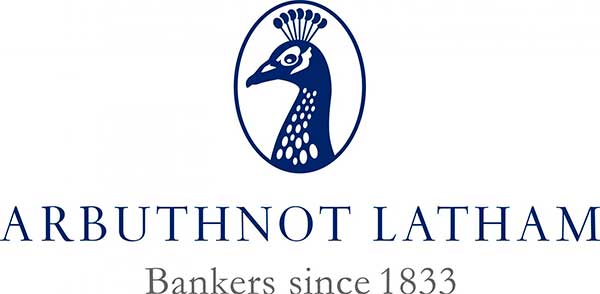
-
Min. account size
£750,000 -
Company type
Private Bank -
Ownership
Private -
Size
UK Wide -
Founded
1833
Book a call with us
One of our team will give you a call at the time selected to discuss your situation and make the introduction to this Wealth Manager on your behalf.
Arbuthnot Latham Private Bank Factfile
Your financial journey is unique – and so is our approach.
We take time to understand your concerns and aspirations, crafting advice and solutions that align with your goals.
From managing your day-to-day banking, to securing your family's future, we simplify the complex and uncover new opportunities.
With our expertise, you can focus on what matters most – while we handle the rest.
Discretionary Investment Management
| Portfolio types | Model, Bespoke |
| Portfolio composition | Fund based, Mixed portfolios, Sustainable / ethical portfolio |
| Investment classes | Equities, ETFs, Funds, Bonds, Structured Products, Hedge Funds, Derivatives |
| Minimum size account for model portfolio | £750,000 |
| Contact person | Investment Manager |
Execution-only Services
| Timezones | UK/Europe |
Wealth Planning
| In-house service | |
| Inheritance Planning | |
| Retirement Planning | |
| Trusts | |
| Offshore Structures | |
| Financial Planning |
Lending
| Types of Collateral | Investment Portfolio, Residential Property, Commercial Property |
| Mortgages | |
| typical minimum mortgage size | £750,000 |
Other Services
| Retail Banking | |
| Ethical Investing |

-
Min. account size
£2,000,000 -
Company type
Private Bank -
Ownership
Private -
Size of wealth manager
Small -
Size
Global -
Founded
2009
Book a call with us
One of our team will give you a call at the time selected to discuss your situation and make the introduction to this Wealth Manager on your behalf.
Banque Havilland Factfile
Banque Havilland is an independent family owned private bank providing professional wealth management services. They offer you access to their personal and professional networks comprising trusted and capable banking, asset management and wealth structuring professionals. Their independence brings many benefits, they adapt quickly to the needs of clients; not to be constrained by the infrastructures that characterise a large banking group and provide services to meet individual circumstances.
Advisory Investment Management
| Contact person | Relationship manager |
| Fee structure | Per trade, annual fee |
| Min. account size | £1,000,000 |
Financial Planning
| In-house service | |
| Pension advice | |
| Tax efficient investments | |
| How we charge | Hourly, fixed |
Discretionary Investment Management
| Contact person | Relationship manager |
| Portfolio types | Model, bespoke |
| Composition | Fund, direct, tracker, mixture |
Lending
| Portfolio lending | |
| Mortgages (residential) | |
| Typical minimum mortgage | £3,000,000 |
| Other finance | Jet, yacht, art |
Execution-only Investing
| Online dealing | |
| Timezones | UK |
| Margin accounts |
Other Services
| Retail banking | |
| Ethical investing | |
| Philanthropy |

-
Min. account size
£1,000,000 -
Company type
Private Bank -
Ownership
Private -
Size of wealth manager
Small -
Size
Global -
Founded
1590
Book a call with us
One of our team will give you a call at the time selected to discuss your situation and make the introduction to this Wealth Manager on your behalf.
Berenberg Private Bank Factfile
Managing private wealth successfully requires a steady and considered approach. Berenberg has managed assets effectively for more than 420 years. As a privately owned bank we continue to manage our business in the same careful and responsible way today.
Advisory Investment Management
| Contact person | Relationship manager |
| Fee structure | Annual fee |
| Min. account size | £1,000,000 |
Discretionary Investment Management
| Contact person | Relationship manager |
| Portfolio types | Model, bespoke |
| Composition | Fund, direct, tracker, mixture, ethical |
Financial Planning
| In-house service | |
| Pension advice | |
| Tax efficient investments | |
| How we charge | Within account fee |
Lending
| Portfolio lending | |
| Mortgages (residential) | |
| Typical minimum mortgage | £1,000,000 |
| Other finance |
Execution-only Investing
| Online dealing | |
| Timezones | |
| Margin accounts |
Other Services
| Retail banking | |
| Ethical investing | |
| Philanthropy |

-
Min. account size
£250,000 -
Company type
Private Bank -
Ownership
Listed on stockmarket -
Size of wealth manager
Medium -
Size
Global -
Founded
1820
Book a call with us
One of our team will give you a call at the time selected to discuss your situation and make the introduction to this Wealth Manager on your behalf.
BNP Paribas Wealth Management Factfile
BNP Paribas is a global bank with Investment Banking, Corporate and Retail Banking and Wealth Management divisions. With offices in over 30 countries, the Wealth Management division has over Euro 265 billion in client assets managed globally and their London office provides a wide array of services to both UK based and international private clients.
Advisory Investment Management
| Contact person | Relationship manager |
| Fee structure | Per trade, annual fee |
| Min. account size |
Discretionary Investment Management
| Contact person | Relationship manager |
| Portfolio types | Model, bespoke |
| Composition | Fund, direct, tracker, mixture |
Financial Planning
| In-house service | |
| Pension advice | |
| Tax efficient investments | |
| How we charge | Within account fee |
Lending
| Portfolio lending | |
| Mortgages (residential) | |
| Typical minimum mortgage | |
| Other finance | Jet, yacht, art |
Execution-only Investing
| Online dealing | |
| Timezones | |
| Margin accounts |
Other Services
| Retail banking | |
| Ethical investing | |
| Philanthropy |

-
Min. account size
£250,000 -
Company type
Investment Manager -
Ownership
Privately Owned -
Size of wealth manager
Global -
Size
Global -
Founded
1844
Book a call with us
One of our team will give you a call at the time selected to discuss your situation and make the introduction to this Wealth Manager on your behalf.
Bordier UK Factfile
We are part of the Bordier Group, which for over 175 years, has helped preserve the wealth entrusted to us by our clients, growing and safeguarding it for future generations. Our wealth and investment management services are designed for UK and international private clients, trustees and charities who require consistency and excellence, whether in the performance of their portfolios, the service received from our staff, the quality of their reporting or the financial advice they receive.
Key person:
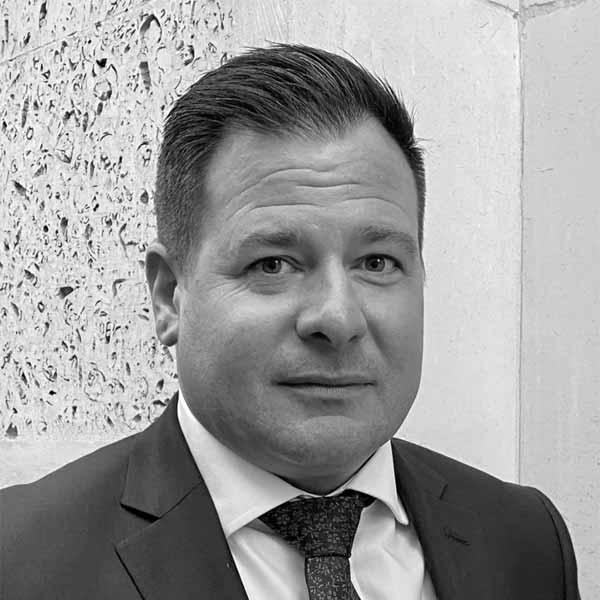
Mark Duggan
Director
Discretionary
| Contact | Investment Manager |
| Portfolio types | Model / Bespoke |
| Composition | Fund |
Financial Planning
| In-house service | |
| Pension advice | |
| Tax efficient investments | |
| How we charge | Flat fee / by the hour |
Lending
| Portfolio lending |

-
Min. account size
£250,000 -
Company type
Investment Manager -
Ownership
Listed on stockmarket -
Size of wealth manager
Medium -
Size
UK Wide -
Founded
1991
Book a call with us
One of our team will give you a call at the time selected to discuss your situation and make the introduction to this Wealth Manager on your behalf.
Brooks Macdonald Factfile
Brooks Macdonald Asset Management Ltd is a specialist investment manager providing discretionary management services for private clients, trusts, charities and pensions funds. From our start in 1991, we were pioneers of fee-only investment management and continue to pass on institutional dealing terms to private clients. We have always embraced open architecture and give private clients full exposure to a range of leading investment managers and strategies. We individually manage portfolios. We will continue to be a fundamentally innovative firm.
Discretionary Investment Management
| Contact person | Relationship manager |
| Portfolio types | Model, Bespoke |
| Composition | Fund, direct, tracker, mixture |
Financial Planning
| In-house service | |
| Pension advice | |
| Tax efficient investments | |
| How we charge | Within account fee, Hourly, Fixed |
Advisory Investment Management
| Contact person | Relationship manager |
| Fee structure | Per trade, annual fee |
| Min. account size |
Lending
| Portfolio lending | |
| Mortgages (residential) | |
| Typical minimum mortgage | |
| Other finance | Jet, yacht, art |
Execution-only Investing
| Online dealing | |
| Timezones | |
| Margin accounts |

-
Min. account size
£1,000,000 -
Company type
Investment Manager -
Ownership
Private -
Size of wealth manager
Small -
Size
Global -
Founded
1993
Book a call with us
One of our team will give you a call at the time selected to discuss your situation and make the introduction to this Wealth Manager on your behalf.
Brown Advisory Factfile
Brown Advisory is an independent investment firm committed to serving its clients by delivering a combination of first-class investment performance, strategic advice and the highest level of service. Founded in 1993 as an affiliate of Alex. Brown & Sons, a leading U.S. investment bank, Brown Advisory became independent in 1998 and today serves families and institutions based in 25 countries.
Key person:

Nick Andjel
Portfolio Manager
Discretionary Investment Management
| Contact person | Investment manager |
| Portfolio types | Model, bespoke |
| Composition | Mixture |
Advisory Investment Management
| Contact person | Investment manager |
| Fee structure | Annual fee |
| Min. account size | £1,000,000 |

-
Min. account size
£2,000,000 -
Company type
Private Bank -
Ownership
Private -
Size of wealth manager
Medium -
Size
UK Wide -
Founded
1810
Book a call with us
One of our team will give you a call at the time selected to discuss your situation and make the introduction to this Wealth Manager on your behalf.
Brown Shipley Factfile
Brown Shipley is a UK authorised private bank with over 200 years of experience, offering fully integrated wealth planning, investment management and lending services. Brown Shipley is part of Quintet Private Bank, a group of boutique private banks and wealth managers operating across over 50 European cities. Being part of Quintet expands our scale, security and adds a truly global outlook to our already strong foundations. We have an unwavering commitment to doing the right thing, protecting and supporting your wealth as if it were our own. We’re here to meet the needs of individuals and families who won’t settle for old-fashioned trade-offs.
We listen carefully to get to the heart of your current circumstances and future ambitions, bringing our combined expertise and perspectives together to help you achieve your goals. We understand that the purpose of wealth – today and for future generations – is always deeply personal. So discover a private bank that listens carefully, thinks ahead and supports your investment objectives, so you can focus on what really matters to you and your family. A partner that strives to earn your trust and a seat at your kitchen table, where life's most important decisions are made.
Advisory Investment Management
| Contact person | Relationship manager |
| Fee structure | Annual fee |
| Min. account size | £1,000,000 |
Discretionary Investment Management
| Contact person | Relationship manager |
| Portfolio types | Model, bespoke |
| Composition | Fund, direct, tracker, mixture |
Financial Planning
| In-house service | |
| Pension advice | |
| Tax efficient investments | |
| How we charge | Within account fee |
Lending
| Portfolio lending | |
| Mortgages (residential) | |
| Typical minimum mortgage | |
| Other finance | Jet, yacht, art |
Other Services
| Retail banking | |
| Ethical investing | |
| Philanthropy |

-
Min. account size
£250,000 -
Company type
Investment Manager -
Ownership
Listed group -
Size of wealth manager
Large -
Size
Global -
Founded
1950
Book a call with us
One of our team will give you a call at the time selected to discuss your situation and make the introduction to this Wealth Manager on your behalf.
Canaccord Genuity Wealth Management Factfile
Canaccord Genuity Wealth Management gives you access to a broad range of wealth management solutions including portfolio management, broking services and wealth planning. It has successfully grown its business and reputation over the years and now, in the UK and Europe, its investment professionals manage and administer over £25bn (as at 31 March 2019) of assets. The business has enough size and scale to deliver experience and expertise, combined with a highly developed and up-to-date technical infrastructure. At the same it is small enough to provide a personal relationship-led service with direct access to its people and knowledge.
Key person:
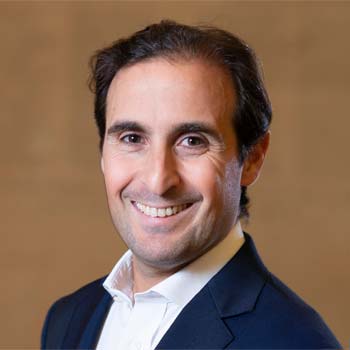
David Esfandi
CEO
Advisory Investment Management
| Contact person | Investment manager |
| Fee structure | Per trade, annual fee |
| Min. account size | £250,000 |
Discretionary Investment Management
| Contact person | Investment manager |
| Portfolio types | Model, bespoke |
| Composition | Fund, direct, mixture |
Financial Planning
| In-house service | |
| Pension advice | |
| Tax efficient investments | |
| How we charge | Within account fee |
Lending
| Portfolio lending | |
| Mortgages (residential) | |
| Typical minimum mortgage | |
| Other finance |
Execution-only Investing
| Online dealing | |
| Timezones | UK |
| Margin accounts |

-
Min. account size
£250,000 -
Company type
Investment Manager -
Ownership
Private -
Size of wealth manager
Small -
Size
UK Wide -
Founded
1985
Book a call with us
One of our team will give you a call at the time selected to discuss your situation and make the introduction to this Wealth Manager on your behalf.
Cardale Factfile
Our business is dedicated to the management of private wealth. We recognise that the strength of our business is entirely based on building lasting relationships with our clients and their other professional advisers. We seek superior investment performance combined with the highest levels of personal and administrative service.
Discretionary Investment Management
| Contact person | Investment manager |
| Portfolio types | Model |
| Composition | Fund, tracker, mixture |
Financial Planning
| In-house service | |
| Pension advice | |
| Tax efficient investments | |
| How we charge | Within account fee |
Advisory Investment Management
| Contact person | Investment manager |
| Fee structure | |
| Min. account size | £250,000 |
Execution-only Investing
| Online dealing | |
| Timezones | UK |
| Margin accounts |

-
Min. account size
£1,000,000 -
Company type
Wealth Managers -
Ownership
Listed group -
Size of wealth manager
Global -
Size
Global -
Founded
1804
Book a call with us
One of our team will give you a call at the time selected to discuss your situation and make the introduction to this Wealth Manager on your behalf.
Cazenove Capital Factfile
Cazenove Capital offers a complete wealth management service, delivering tailored portfolio management, wealth planning, banking and lending services to private individuals, family offices, trusts and charities. As the wealth management business of Schroders, our significant family ownership and financial strength enables us to genuinely take a long–term view and focus on the needs of our clients. Each of our clients has unique financial requirements and objectives, but all have a common goal – to preserve and grow the value of their wealth. We believe that environmental, social and governance considerations are fundamental. We therefore incorporate sustainability factors into all our investment processes, while our dedicated sustainable portfolios allow clients to go further in aligning their investments with their values. We explore each client's needs in detail and advise them on the most suitable financial solutions for their particular circumstances. Our client communication and reporting is effective, clear, flexible and comprehensive.We also have efficient custody, administration and online reporting platforms which enable clients to centralise their financial affairs with us with confidence. Our headquarters are in London. We have regional offices in the UK, including Oxford, Manchester and Edinburgh. We have international offices in Guernsey, Jersey, Geneva, Zurich and Singapore. Cazenove Capital is a trading name of Schroder & Co. Limited.
Key person:
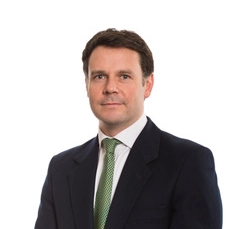
Alun Lewis
Portfolio Director
Discretionary Investment Management
| Contact person | Investment manager |
| Portfolio types | Model, bespoke |
| Composition | Fund, direct, tracker, mixture, ethical |
Financial Planning
| In-house service | |
| Pension advice | |
| Tax efficient investments | |
| How we charge | Fixed |
Lending
| Portfolio lending | |
| Mortgages (residential) | |
| Typical minimum mortgage | N/A |
| Other finance |
Other Services
| Philanthropy | |
| Ethical investing |

-
Min. account size
£250,000 -
Company type
Investment Manager -
Ownership
Listed on Stock Market -
Size of wealth manager
Large -
Size
UK Wide -
Founded
1792
Book a call with us
One of our team will give you a call at the time selected to discuss your situation and make the introduction to this Wealth Manager on your behalf.
Charles Stanley & Co. Limited Factfile
Charles Stanley & Co. Limited is one of the oldest firms on the London Stock Exchange, first appearing as an independent member firm in 1852. Today, Charles Stanley & Co. Limited is one of the leading investment management companies in the UK, dedicated to serving the private investor. The level of service you choose will be determined by how actively involved you want to be in the management of your investments and how confident you are with monitoring the balance of risk and reward yourself.
Key person:

Paul Abberley
Chief Executive Officer
Discretionary Investment Management
| Contact person | Investment manager |
| Portfolio types | Model, bespoke |
| Composition | Fund, direct, tracker, mixture |
Financial Planning
| In-house service | |
| Pension advice | |
| Tax efficient investments | |
| How we charge | Within account fee |
Advisory Investment Management
| Contact person | Investment manager |
| Fee structure | Annual fee |
| Min. account size | £100,000 |
Execution-only Investment
| Online dealing | |
| Timezones | International |
| Margin accounts |

-
Min. account size
£500,000 -
Company type
Investment Manager -
Ownership
Owner manager -
Size of wealth manager
Small -
Size
UK Wide -
Founded
1997
Book a call with us
One of our team will give you a call at the time selected to discuss your situation and make the introduction to this Wealth Manager on your behalf.
Church House Factfile
Church House Investment Management (Church House) is a private investment management company. We offer investment management services for private individuals and family groups, including their ISAs, pension funds, trusts and charitable foundations.We are an independent company. The directors and senior staff hold a controlling interest in the company's equity share capital.
Advisory Investment Management
| Contact person | |
| Fee structure | |
| Min. account size |
Discretionary Investment Management
| Contact person | Investment manager |
| Portfolio types | |
| Composition | Fund, direct, tracker, mixture |
Financial Planning
| In-house service | |
| Pension advice | |
| Tax efficient investments | |
| How we charge |
Lending
| Portfolio lending | |
| Mortgages (residential) | |
| Typical minimum mortgage | |
| Other finance |
Execution-only Investing
| Online dealing | |
| Timezones | |
| Margin accounts |
Other Services
| Retail banking | |
| Ethical investing | |
| Philanthropy |

-
Min. account size
£5,000,000 -
Company type
Private Bank -
Ownership
Part of a listed group -
Size of wealth manager
Large -
Size
Global -
Founded
1812
Book a call with us
One of our team will give you a call at the time selected to discuss your situation and make the introduction to this Wealth Manager on your behalf.
Citi Private Bank Factfile
Citi Private Bank is part of Citibank, the global financial institution. Using the capabilities of the global bank, the private bank caters to the needs of the ultra high net worth individual and family; providing investment, banking, lending and wealth advisory services.
Advisory Investment Management
| Contact person | Relationship manager |
| Fee structure | Annual fee |
| Min. account size | £10,000,000 |
Discretionary Investment Management
| Contact person | Relationship manager |
| Portfolio types | Model, bespoke |
| Composition | Fund, direct, tracker, mixture |
Financial Planning
| In-house service | |
| Pension advice | |
| Tax efficient investments | |
| How we charge | Within account fee |
Lending
| Portfolio lending | |
| Mortgages (residential) | |
| Typical minimum mortgage | |
| Other finance | Jet, yacht, art |
Execution-only Investing
| Online dealing | |
| Timezones | UK, US, Asia |
| Margin accounts |
Other Services
| Retail banking | |
| Ethical investing | |
| Philanthropy |

-
Min. account size
£100,000 -
Company type
Investment Manager -
Ownership
Owner manager -
Size of wealth manager
Small -
Size
Boutique -
Founded
1988
Book a call with us
One of our team will give you a call at the time selected to discuss your situation and make the introduction to this Wealth Manager on your behalf.
City Asset Management Factfile
City Asset Management is an investment management company dedicated to the maintenance and preservation of the asset base and wealth of its clients. The company, founded in 1988, is mainly owned by the working directors and, as a result, is free from any bias or conflict of interest which might arise from ownership by an institutional parent.
Financial Planning
| In-house service | |
| Pension advice | |
| Tax efficient investments | |
| How we charge |
Discretionary Investment Management
| Contact person | Investment manager |
| Portfolio types | Model, bespoke |
| Composition | Fund, direct, tracker, mixture |

-
Min. account size
£250,000 -
Company type
Investment Manager -
Ownership
Listed on stockmarket -
Size of wealth manager
Large -
Size
UK Wide -
Founded
1878
Book a call with us
One of our team will give you a call at the time selected to discuss your situation and make the introduction to this Wealth Manager on your behalf.
Close Brothers Factfile
Close Brothers is a leading merchant banking group, providing lending, deposit taking, wealth management services, and securities trading. We employ 2,800 people, principally in the UK, and are one of the largest 250 companies listed on the London Stock Exchange.
Advisory Investment Management
| Contact person | Investment manager |
| Fee structure | Annual fee |
| Min. account size | £250,000 |
Financial Planning
| In-house service | |
| Pension advice | |
| Tax efficient investments | |
| How we charge | Within account fee |
Discretionary Investment Management
| Contact person | Investment manager |
| Portfolio types | Model, Bespoke |
| Composition | Fund, direct, tracker, mixture |
Execution-only Investing
| Online dealing | |
| Timezones | UK |
| Margin accounts |
Other Services
| Retail banking | |
| Ethical investing | |
| Philanthropy |

-
Min. account size
£1,000,000 -
Company type
Private Bank -
Ownership
Part of a listed group -
Size of wealth manager
Large -
Size
UK Wide -
Founded
1962
Book a call with us
One of our team will give you a call at the time selected to discuss your situation and make the introduction to this Wealth Manager on your behalf.
Coutts & Co. Factfile
Coutts' exceptional service has been valued by clients for over 300 years. From private investments to wealth management, commercial banking to tax advice, we pride ourselves on building professional relationships that last.
Advisory Investment Management
| Contact person | Investment manager |
| Fee structure | Per trade, annual fee |
| Min. account size | £1,000,000 |
Discretionary Investment Management
| Contact person | Investment manager |
| Portfolio types | Model, bespoke |
| Composition | Fund, direct, mixture, ethical |
Financial Planning
| In-house service | |
| Pension advice | |
| Tax efficient investments | |
| How we charge | Within account fee |
Lending
| Portfolio lending | |
| Mortgages (residential) | |
| Typical minimum mortgage | £1,000,000 |
| Other finance |
Execution-only Investing
| Online dealing | |
| Timezones | UK |
| Margin accounts |
Other Services
| Retail banking | |
| Ethical investing | |
| Philanthropy |

-
Min. account size
£250,000 -
Company type
Wealth Managers -
Ownership
Owner Manager -
Size of wealth manager
Small -
Size
Global -
Founded
1998
Book a call with us
One of our team will give you a call at the time selected to discuss your situation and make the introduction to this Wealth Manager on your behalf.
Credo Wealth Factfile
Credo is a global independent wealth management business that has been in existence since 1998 and employs over 90 staff. The group has the privilege of managing over of £3.2bn of client assets. Credo Wealth is majority owned by senior management, many of whom have been with the group for more than ten years and as such our owner managed culture puts the client at the heart of every decision. We aim to provide our clients with a personal service and to build relationships based on trust. We believe wealth is created and preserved by following a patient and disciplined investment strategy that is focused on the long-term, keeping costs down and methodologies that have proven to be robust through a variety of market cycles.
Key person:
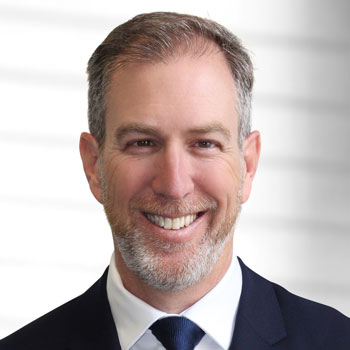
Alan Noik
Managing Director
Discretionary
| Contact | Relationship manager |
| Portfolio types | Model / Bespoke |
| Composition | Fund, mixture, direct |
Financial Planning
| In-house service | |
| Pension advice | |
| Tax efficient investments | |
| How we charge | Flat fee / by the hour |

-
Min. account size
£5,000,000 -
Company type
Private Bank -
Ownership
Part of a listed group -
Size of wealth manager
Small -
Size
Global -
Founded
1870
Book a call with us
One of our team will give you a call at the time selected to discuss your situation and make the introduction to this Wealth Manager on your behalf.
Deutsche Asset & Wealth Management Factfile
As a leading division of Deutsche Bank, the global banking group, Deutsche Wealth Management focuses on providing full investment and wealth services to ultra high net worth investors. With global reach and deep expertise, the services offered well catered to the sophisticated and demanding investor.
Advisory Investment Management
| Contact person | Relationship manager |
| Fee structure | Annual fee |
| Min. account size | £5,000,000 |
Discretionary Investment Management
| Contact person | Relationship manager |
| Portfolio types | Model, bespoke |
| Composition | Fund, mixture |
Financial Planning
| In-house service | |
| Pension advice | |
| Tax efficient investments | |
| How we charge | Within account fee |
Lending
| Portfolio lending | |
| Mortgages (residential) | |
| Typical minimum mortgage | |
| Other finance | Jet, yacht, art |
Execution-only Investing
| Online dealing | |
| Timezones | UK |
| Margin accounts |
Other Services
| Retail banking | |
| Ethical investing | |
| Philanthropy |
-
Min. account size
£1,000,000 -
Company type
Private Bank -
Ownership
Part of a listed group -
Size of wealth manager
Medium -
Size
Global -
Founded
1834
Book a call with us
One of our team will give you a call at the time selected to discuss your situation and make the introduction to this Wealth Manager on your behalf.
EFG Factfile
EFG Private Bank is part of EFG International, a global private banking group headquartered in Zurich, Switzerland. EFG International operates in around 30 locations worldwide, and its shares are listed on the SIX Swiss Exchange. EFG Private Bank Limited is the UK-based private banking arm of EFG International, with subsidiaries in Jersey and Guernsey. Our activities encompass banking and credit, financial planning, investment management, offshore trust and company formation and management.
Advisory Investment Management
| Contact person | Relationship manager |
| Fee structure | Annual fee |
| Min. account size | £1,000,000 |
Discretionary Investment Management
| Contact person | Relationship manager |
| Portfolio types | Model & bespoke |
| Composition | Fund, direct, tracker, mixture, ethical |
Financial Planning
| In-house service | |
| Pension advice | |
| Tax efficient investments | |
| How we charge | Within account fee |
Lending
| Portfolio lending | |
| Mortgages (residential) | |
| Typical minimum mortgage | |
| Other finance |
Execution-only Investing
| Online dealing | |
| Timezones | |
| Margin accounts |
Other Services
| Retail banking | |
| Ethical investing | |
| Philanthropy |

-
Min. account size
£1,000,000 -
Company type
Private Bank -
Ownership
Part of a listed group -
Size of wealth manager
Small -
Size
Global -
Founded
1963
Book a call with us
One of our team will give you a call at the time selected to discuss your situation and make the introduction to this Wealth Manager on your behalf.
Emirates NBD Bank Factfile
Emirates NBD, the leading banking group in the region, was formed on 16th of October 2007 when the shares of Emirates NBD were officially listed on the Dubai Financial Market (DFM). The Emirates NBD 2007 merger between Emirates Bank International (EBI) and the National Bank of Dubai (NBD), became a regional consolidation blueprint for the banking and finance sector as it combined the second and fourth largest banks in the United Arab Emirates (UAE) to form a banking champion capable of delivering enhanced value across corporate, retail, private, Islamic and investment banking throughout the region.In 2013, Emirates NBD celebrated its 50th anniversary, marking the Group's outstanding achievements while highlighting the bank's solid historical and financial foundations as well as its promising future. Emirates NBD's vision is to be globally recognised as the most valued financial services provider based in the Middle East. It is a market leader across core business lines and the leading retail banking franchise, with 220 branches and over 927 ATMs and Cash Deposit Machines (CDMs) spread across the country and overseas.
Advisory Investment Management
| Contact person | Relationship manager |
| Min. account size | £1,000,000 |
Discretionary Investment Management
| Contact person | |
| Portfolio types | Model & bespoke |
| Composition | Funds, trackers, |
Lending
| Portfolio lending | |
| Mortgages (residential) | |
| Typical minimum mortgage | |
| Other finance |

-
Min. account size
£50,000 -
Company type
Investment Manager -
Ownership
Private -
Size of wealth manager
Small -
Size
Boutique -
Founded
1987
Book a call with us
One of our team will give you a call at the time selected to discuss your situation and make the introduction to this Wealth Manager on your behalf.
EQ Investors Ltd Factfile
EQ is based in the City of London. It was acquired in 2014 by John Spiers, founder of Bestinvest. Since then it has expanded significantly and now employs over 60 staff. The ambition of EQ is "to be the best, not the biggest". There is an overwhelming emphasis on high quality client service backed up by a top quality investment team.
Discretionary Investment Management
| Contact person | Investment Manager |
| Portfolio types | Model, bespoke |
| Composition | Fund, tracker, mixture |
Financial Planning
| In-house service | |
| Pension advice | |
| Tax efficient investments | |
| How we charge |

-
Min. account size
£50,000 -
Company type
Investment Manager -
Ownership
Private -
Size of wealth manager
UK Wide -
Size
UK Wide -
Founded
1881
Book a call with us
One of our team will give you a call at the time selected to discuss your situation and make the introduction to this Wealth Manager on your behalf.
Evelyn Partners Factfile
Like most families, we’re proud of our roots. From Tilney’s beginnings in Liverpool in 1836, to the founding of Smith & Williamson in Glasgow in 1881, throughout our history we’ve helped generations of people and businesses thrive. Fast forward to 2022, and with Tilney Smith & Williamson renamed as Evelyn Partners, a new chapter of our family story has begun. A story of change – but also of constancy. We’re still here, with £56billion of assets under management (as at June 2022) and offices in 25 towns and cities across Britain, Ireland and the Channel Islands, we continue to do what we do best: placing the power of good advice into more hands.
We believe that more people and businesses should have access to good advice, regardless of their size or wealth. We are committed to raising the standards of good advice and to extending its reach. All our advice is delivered by people who care, who go further to understand your needs so they can help you make those big decisions with ease and confidence. Our investment managers and financial planners have the expertise you can lean on to help you grow your wealth and achieve your financial goals. We will work with you to understand your objectives and what matters to you before designing an investment solution that is suitable for you.
As the UK’s leading integrated wealth management and professional services group, we are able to look after the combined wealth and tax needs of our clients and, as well as investment management and financial planning, we provide specialist accountancy, assurance, tax and advisory services. Our clients range from online investors to those requiring bespoke wealth management, and from charities and trusts to entrepreneurs and corporate businesses.
Investment Management
| Contact person | Investment Manager |
Financial Planning
| Tax efficient investments | |
| In-house service | |
| Assurance |
Other Services
| Accountancy |

-
Min. account size
£50,000 -
Company type
Investment Manager -
Ownership
Private -
Size of wealth manager
Large -
Size
Global -
Founded
1969
Book a call with us
One of our team will give you a call at the time selected to discuss your situation and make the introduction to this Wealth Manager on your behalf.
Fidelity Factfile
It has been more than 45 years since we were founded, so we’ve seen many market cycles – whether it be bulls and bears or booms and busts. This experience has given us an in-depth knowledge of how markets perform, which helps us find the right paths through many different investment environments. Throughout this time, the needs of our clients have always steered our decisions. Which is why we’ve kept investing as our core activity. We are not a bank. We don’t do insurance. We are purely and simply investors. It’s a particular focus, but we believe this is what allows us to excel – and, even more importantly, to repay the trust that over 1.1m UK clients place in us.Fidelity Wealth rewards investors with a more personalised service, a loyalty bonus and exclusive events across the country. There is no charge for this service. To join you need investments of £100,000 or more held directly with Fidelity. Many of our investors have reached the minimum value by bringing together ISAs, funds and personal pensions from other providers
Advisory Investment Management
| Contact person | Investment manager |
| Fee structure | Annual fee |
| Min. account size | £50,000 |
Discretionary Investment Management
| Contact person | Investment manager |
| Portfolio types | Model, bespoke |
| Composition | Fund, direct, tracker, mixture |
Financial Planning
| In-house service | |
| Pension advice | |
| Tax efficient investments | |
| How we charge | Within account fee, Hourly |
Lending
| Portfolio lending | |
| Mortgages (residential) | |
| Typical minimum mortgage | |
| Other finance | Jet, yacht, art |
Execution-only Investing
| Online dealing | |
| Online dealing | UK, US, Asia |
| Margin accounts |
Other Services
| Retail banking | |
| Ethical investing | |
| Philanthropy |
-
Min. account size
£250,000 -
Company type
Investment Manager -
Ownership
Private -
Size of wealth manager
Large -
Size
Global -
Founded
1979
Book a call with us
One of our team will give you a call at the time selected to discuss your situation and make the introduction to this Wealth Manager on your behalf.
Fisher Wealth Management Factfile
Fisher Investments UK (formerly Fisher Wealth Management) is the wholly-owned subsidiary of Fisher Investments, a private, independent investment management company. Fisher Investments, the parent company of Fisher Investments UK, has been providing portfolio management services in the US since 1979. Fisher offers a wide range of wealth management strategies for individuals and institutions by devising a bespoke investment plan for each client.
Discretionary Investment Management
| Contact person | Investment manager |
| Portfolio types | Model, bespoke |
| Composition | Fund, direct, tracker, mixture |
Financial Planning
| In-house service | |
| Pension advice | |
| Tax efficient investments | |
| How we charge | Within account fee, hourly, Fixed |

-
Min. account size
£5,000,000 -
Company type
Private Bank -
Ownership
Part of a listed group -
Size of wealth manager
Medium -
Size
Global -
Founded
1980
Book a call with us
One of our team will give you a call at the time selected to discuss your situation and make the introduction to this Wealth Manager on your behalf.
Goldman Sachs Factfile
We help our clients pursue their wealth management goals through careful advice, astute investment management and access to the capabilities and network of Goldman Sachs. We work closely with high-net-worth individuals, families and select foundations and endowments to develop wealth and investment management strategies. We then identify investment opportunities to help them reach their objectives. We complement these services with robust execution capabilities and attentive client service. Where appropriate, we introduce our clients to the broader network and resources of Goldman Sachs.
Advisory Investment Management
| Contact person | Relationship manager |
| Fee structure | Annual fee |
| Min. account size | £10,000,000 |
Discretionary Investment Management
| Contact person | Relationship manager |
| Portfolio types | Model, bespoke |
| Composition | Fund, direct, tracker, mixture, ethical |
Financial Planning
| In-house service | |
| Pension advice | |
| Tax efficient investments | |
| How we charge | Within account fee |
Lending
| Portfolio lending | |
| Mortgages (residential) | |
| Typical minimum mortgage | |
| Other finance |
Execution-only Investing
| Online dealing | |
| Timezones | |
| Margin accounts |
Other Services
| Retail banking | |
| Ethical investing | |
| Philanthropy |

-
Min. account size
£500,000 -
Company type
Investment Manager -
Ownership
Private -
Size of wealth manager
Large -
Size
Global -
Founded
1994
Book a call with us
One of our team will give you a call at the time selected to discuss your situation and make the introduction to this Wealth Manager on your behalf.
GWM Investment Management Factfile
Discretionary Investment Management
| Contact person | Investment Manager |
| Portfolio types | Model, bespoke |
| Composition | Fund, direct, tracker, mixture |
Financial Planning
| In-house service | |
| Pension advice | |
| Tax efficient investments | |
| How we charge |
Advisory Investment Management
| Contact person | Investment Manager |
| Fee structure | Annual fee |
| Min. account size | £500,000 |
Execution-only Investing
| Online dealing | |
| Timezones | UK, Europe |
| Margin accounts |

-
Min. account size
£250,000 -
Company type
Private Bank -
Ownership
Listed group -
Size of wealth manager
Small -
Size
UK Wide -
Founded
1871
Book a call with us
One of our team will give you a call at the time selected to discuss your situation and make the introduction to this Wealth Manager on your behalf.
Handelsbanken Factfile
Our experts can simplify and streamline your affairs and free up your time by helping you to choose, buy, sell, hold and manage your investments. As a one-stop shop, we remove unnecessary duplication and give you the benefit of low, transparent charges and market-leading initial and annual savings on funds. In the last year we have provided more than £200 million in discounts and rebates for our clients.
Advisory Investment Management
| Contact person | Relationship manager |
| Fee structure | Annual fee |
| Min. account size | £250,000 |
Discretionary Investment Management
| Contact person | Relationship manager |
| Portfolio types | Bespoke, trackers, funds |
| Composition | Fund, mixture |
Financial Planning
| In-house service | |
| Pension advice | |
| Tax efficient investments | |
| How we charge | Within account fee |
Lending
| Portfolio lending | |
| Mortgages (residential) | |
| Typical minimum mortgage | |
| Other finance |

-
Min. account size
£50,000 -
Company type
Investment Manager -
Ownership
Listed on stockmarket -
Size of wealth manager
Large -
Size
UK Wide -
Founded
1989
Book a call with us
One of our team will give you a call at the time selected to discuss your situation and make the introduction to this Wealth Manager on your behalf.
Hargreaves Lansdown Factfile
We are one of the UK's leading independent financial service providers and asset management specialists. Our mission is to help investors make more of their investments by providing the best information, the best service and the best prices. We are a fund supermarket, a fund manager, a discount broker, a stockbroker, a pensions specialist, an annuity specialist, a wealth manager and a financial adviser. In other words, a one-stop shop.
Advisory Investment Management
| Contact person | Investment manager |
| Fee structure | Annual fee |
| Min. account size | £100,000 |
Discretionary Investment Management
| Contact person | Investment manager |
| Portfolio types | Model, bespoke |
| Composition | Fund, direct, tracker, mixture |
Financial Planning
| In-house service | |
| Pension advice | |
| Tax efficient investments | |
| How we charge | Hourly, fixed |
Execution-only Investing
| Online dealing | |
| Timezones | UK, US, Asia |
| Margin accounts |

-
Min. account size
£500,000 -
Company type
Investment Manager -
Ownership
Part of a listed group -
Size of wealth manager
Small -
Size
UK Wide -
Founded
1988
Book a call with us
One of our team will give you a call at the time selected to discuss your situation and make the introduction to this Wealth Manager on your behalf.
Heartwood Wealth Factfile
Since we were founded over 25 years ago, Heartwood has grown steadily and we currently have over £2 billion of funds under management. Much of our new business comes to Heartwood thanks to word-of-mouth referrals from existing clients, which we see as a testament to their satisfaction not only with our investment management and private wealth management services, but also with the exceptional quality of our personal attention. This is a source of great pride, because many clients are senior executives of investment banks and multinational companies, partners of private-equity firms and hedge funds, other successful professionals and families with substantial wealth. Without exception, they are extremely discerning when it comes to their personal financial affairs. In 2013, Heartwood became a wholly-owned subsidiary of Handelsbanken, the local relationship bank, in order to create a uniquely customer-led banking, wealth and investment management service across the UK. Together, the business continues to focus on long-term client relationships and high service standards.
Advisory Investment Management
| Contact person | |
| Fee structure | Per trade, annual fee |
| Min. account size |
Financial Planning
| In-house service | |
| Pension advice | |
| Tax efficient investments | |
| How we charge | Within account fee, hourly, fixed |
Lending
| Portfolio lending | |
| Mortgages (residential) | |
| Typical minimum mortgage | |
| Other finance | Jet, yacht, art |
Discretionary Investment Management
| Contact person | |
| Portfolio types | Model, bespoke |
| Composition | Fund, direct, tracker, mixture |
Execution-only Investing
| Online dealing | |
| Timezones | |
| Margin accounts |
Other Services
| Retail banking | |
| Ethical investing | |
| Philanthropy |

-
Min. account size
£500,000 -
Company type
Investment Manager -
Ownership
Private -
Size of wealth manager
Small -
Size
Boutique -
Founded
2002
Book a call with us
One of our team will give you a call at the time selected to discuss your situation and make the introduction to this Wealth Manager on your behalf.
Henderson Rowe Factfile
Henderson Rowe Limited is an investment management firm providing asset allocation solutions to small corporate and local pensions, and high-net-worth individuals and families. It also specializes in working with qualified investors in the UK Tier-1 Investor Visa programme.
Henderson Rowe focuses on investor outcomes by leveraging expertise in global markets and factor-based research to develop multi-asset strategies and build dynamic asset allocation models.
Key person:

Artur Baluszynski
Director, Head of Research
Discretionary Investment Management
| Contact person | Investment manager |
| Portfolio types | Model, bespoke |
| Composition | Fund, direct, tracker, mixture |
Financial Planning
| In-house service | |
| Pension advice | |
| Tax efficient investments | |
| How we charge | Within account fee |
Advisory Investment Management
| Contact person | Investment manager |
| Fee structure | Annual fee |
| Min. account size | £1,000,000 |

-
Min. account size
£1,000,000 -
Company type
Investment Manager -
Ownership
Owner Manager -
Size of wealth manager
Global -
Size
UK Wide -
Founded
1786
Book a call with us
One of our team will give you a call at the time selected to discuss your situation and make the introduction to this Wealth Manager on your behalf.
Hottinger & Co. Ltd. Factfile
Hottinger Group is an international wealth management company, principally owned by the families we serve. Over time we develop an in-depth knowledge and understanding of the circumstances, complications and arrangements of each family. This is key to delivering bespoke professional and investment advice which complies with individual aspirations, the broader regulations and which will stand the test of time. We protect the interests of our clients and provide them with a professional environment to share experiences, ideas and opportunities with like-minded people. Above all, families place their trust in us because of that rare trait we hold most dear, that of integrity.
The origins of the Hottinger brand in financial services date back to 1786, when Baron Jean Conrad Hottinger established Banque Hottinguer & Cie. in Paris. For over 200 years of private ownership, the family bank forged merchant trading links with the Americas, pioneered nascent European government debt issuance and funded French industrialisation and many ground-breaking infrastructure developments on the continent. In 2015, the family decided to sell a majority stake in their London-based business and the new owners chose to retain the name for the Group, reflecting their desire to leverage the skills, experience and historical identity of Hottinger whilst focusing on delivering strategic wealth management and bespoke professional, investment and administrative services to multiple generations of family clients. We look after 200 families with wealth valued at $60bln.
Key person:

Rob Webster
Director, family office
Discretionary
| Contact | Investment Manager / Relationship Manager |
| Portfolio types | Bespoke |
| Composition | Fund / Direct / Passive / Mixed |
Financial Planning
| In-house service | |
| Pension advice | |
| Tax efficient investments | |
| How we charge | Flat fee / By the hour |
Lending - Types Of Collateral
| Property | |
| Private Jet | |
| Yacht | |
| Art | |
| Investment Portfolio |

-
Min. account size
£5,000,000 -
Company type
Private Bank -
Ownership
Part of a listed group -
Size of wealth manager
Large -
Size
Global -
Founded
1853
Book a call with us
One of our team will give you a call at the time selected to discuss your situation and make the introduction to this Wealth Manager on your behalf.
HSBC Private Bank Factfile
HSBC Private Bank, together with the private banking activities of HSBC Trinkaus & Burkhardt, known collectively as Global Private Banking, provides services to high net worth individuals and their families through over 80 locations in some 36 countries and territories in Europe, the Asia-Pacific region, the Americas, the Middle East and Africa.
Advisory Investment Management
| Contact person | Relationship manager |
| Fee structure | Annual fee |
| Min. account size | £5,000,000 |
Discretionary Investment Management
| Contact person | Relationship manager |
| Portfolio types | Model, bespoke |
| Composition | Fund, direct, tracker, mixture |
Financial Planning
| In-house service | |
| Pension advice | |
| Tax efficient investments | |
| How we charge | Within account fee |
Lending
| Portfolio lending | |
| Mortgages (residential) | |
| Typical minimum mortgage | £1,000,000 |
| Other finance | Jet, yacht, art |
Execution-only Investing
| Online dealing | |
| Timezones | |
| Margin accounts |
Other Services
| Retail banking | |
| Ethical investing | |
| Philanthropy |

-
Min. account size
£250,000 -
Company type
Investment Manager -
Ownership
Part of a listed group -
Size of wealth manager
Large -
Size
UK Wide -
Founded
1945
Book a call with us
One of our team will give you a call at the time selected to discuss your situation and make the introduction to this Wealth Manager on your behalf.
J M Finn Factfile
Founded in 1945 as a partnership, today JM Finn is an investment manager owned by Belgian investment group Ackermans and van Haaren (AvH). Specialising in discretionary investment management and managed advisory relationships, JM Finn prides itself on bringing a traditional values of service and fairness to client relationships.
Advisory Investment Management
| Contact person | Investment manager |
| Fee structure | Annual fee |
| Min. account size | £250,000 |
Discretionary Investment Management
| Contact person | Investment manager |
| Portfolio types | Model, bespoke |
| Composition | Fund, direct, tracker, mixture |
Financial Planning
| In-house service | |
| Pension advice | |
| Tax efficient investments | |
| How we charge | Within account fee, hourly, Fixed |
Lending
| Portfolio lending | |
| Mortgages (residential) | |
| Typical minimum mortgage | |
| Other finance |
Execution-only Investing
| Online dealing | |
| Timezones | UK |
| Margin accounts |
Other Services
| Retail banking | |
| Ethical investing | |
| Philanthropy |

-
Min. account size
£1,000,000 -
Company type
Investment Manager -
Ownership
Private -
Size of wealth manager
Small -
Size
Boutique -
Founded
2010
Book a call with us
One of our team will give you a call at the time selected to discuss your situation and make the introduction to this Wealth Manager on your behalf.
James Hambro & Partners Factfile
Formed in 2010, James Hambro and Partners is an independently-owned Private Asset Management and Financial Planning group combining a comprehensive client service with institutional-quality investment management, whilst also providing expert guidance on creating, protecting and passing on wealth. Our partners have an average of 25 years experience in financial markets, covering both investment management and financial planning.
Key person:

Rosie Bullard
CFA | Partner - Portfolio Manager
Discretionary Investment Management
| Contact person | Investment manager |
| Portfolio types | Model, bespoke |
| Composition | Fund, direct, mixture, ethical |
Financial Planning
| In-house service | |
| Pension advice | |
| Tax efficient investments | |
| How we charge | Within account fee |
Advisory Investment Management
| Contact person | Investment manager |
| Fee structure | Annual fee |
| Composition | Trackers, direct equities, direct bonds |
Lending
| Portfolio lending | |
| Mortgages (residential) | |
| Typical minimum mortgage | |
| Other finance |
Execution-only Investing
| Online dealing | |
| Timezones | |
| Margin accounts |
Other Services
| Retail banking | |
| Ethical investing | |
| Philanthropy |

-
Min. account size
£1,000,000 -
Company type
Private Bank -
Ownership
Listed group -
Size of wealth manager
Small -
Size
Global -
Founded
1962
Book a call with us
One of our team will give you a call at the time selected to discuss your situation and make the introduction to this Wealth Manager on your behalf.
Jefferies Wealth Management Factfile
Jefferies Wealth Management provides focused wealth management services designed to meet the unique needs of each client. Advisors work with clients to determine long- and short-term objectives and develop a plan to meet those objectives in a disciplined fashion. Clients have full access to the resources of the global firm, including asset management products, equity, fixed income and commodities trading platforms, and award-winning research.
Advisory Investment Management
| Contact person | Relationship manager |
| Fee structure | Annual fee |
| Min. account size | £500,000 |
Discretionary Investment Management
| Contact person | Relationship manager |
| Portfolio types | Model, bespoke |
| Composition | Fund, direct, tracker, mixture |
Financial Planning
| In-house service | |
| Pension advice | |
| Tax efficient investments | |
| How we charge | Hourly, fixed |
Lending
| Portfolio lending | |
| Mortgages (residential) | |
| Typical minimum mortgage | |
| Other finance |
Execution-only Investing
| Online dealing | |
| Timezones | UK, US |
| Margin accounts |

-
Min. account size
£5,000,000 -
Company type
Private Bank -
Ownership
Part of a listed group -
Size of wealth manager
Large -
Size
Global -
Founded
1798
Book a call with us
One of our team will give you a call at the time selected to discuss your situation and make the introduction to this Wealth Manager on your behalf.
JP Morgan Private Bank Factfile
JP Morgan is a global financial institution with a large private banking division servicing high net worth and ultra high net worth clients. The institution was founded over 160 years ago and in addition to private banking it focuses on investment banking, asset management and commercial banking. With the private bank JP Morgan uses the investment expertise from across the business to bring clients a sophisticated and high quality service.
Advisory Investment Management
| Contact person | Relationship manager |
| Fee structure | Annual fee |
| Min. account size | £5,000,000 |
Financial Planning
| In-house service | |
| Pension advice | |
| Tax efficient investments | |
| How we charge | Within account fee |
Discretionary Investment Management
| Contact person | Relationship manager |
| Portfolio types | Model, bespoke |
| Composition | Fund, direct, tracker, mixture |
Lending
| Portfolio lending | |
| Mortgages (residential) | |
| Typical minimum mortgage | |
| Other finance | Jet, yacht, art |
Execution-only Investing
| Online dealing | |
| Timezones | UK, US, Asia |
| Margin accounts |
Other Services
| Retail banking | |
| Ethical investing | |
| Philanthropy |

-
Min. account size
£2,000,000 -
Company type
Private Bank -
Ownership
Listed on stockmarket -
Size of wealth manager
Large -
Size
Global -
Founded
1890
Book a call with us
One of our team will give you a call at the time selected to discuss your situation and make the introduction to this Wealth Manager on your behalf.
Julius Baer Factfile
The Julius Baer Group is the leading Swiss private banking group, focusing exclusively on the demands of sophisticated private clients, family offices and independent asset managers from around the world. The Group is completely independent in each and every aspect of its business – from the focused business model and sound financials to the dedicated investment management, open product platform and expert research.
Advisory Investment Management
| Contact person | Relationship manager |
| Fee structure | Annual fee |
| Min. account size | £2,000,000 |
Discretionary Investment Management
| Contact person | Relationship manager |
| Portfolio types | Model, bespoke |
| Composition | Fund, mixture, ethical |
Financial Planning
| In-house service | |
| Pension advice | |
| Tax efficient investments | |
| How we charge | Within account fee |
Lending
| Portfolio lending | |
| Mortgages (residential) | |
| Typical minimum mortgage | £2,000,000 |
| Other finance | Jet, yacht, art |
Execution-only Investing
| Online dealing | |
| Timezones | UK, US |
| Margin accounts |
Other Services
| Retail banking | |
| Ethical investing | |
| Philanthropy |

-
Min. account size
£100,000 -
Company type
Investment Manager -
Ownership
Owner Manager -
Size of wealth manager
Medium -
Size
Boutique -
Founded
1989
Book a call with us
One of our team will give you a call at the time selected to discuss your situation and make the introduction to this Wealth Manager on your behalf.
Killik & Co. Factfile
Established in 1989, Killik & Co provides wealth planning, investment management and advisory stockbroking services, with access to all major asset classes - equities, fixed income bonds, offshore bonds, commodities and currencies – in over 30 markets worldwide. Killik & Co prides itself on being a relationship firm, with an emphasis on accessibility, trust and integrity.
Discretionary Investment Management
| Contact person | Investment manager |
| Portfolio types | Bespoke |
| Composition | Fund, tracker, ethical |
Advisory Investment Management
| Contact person | Investment manager |
| Fee structure | Per trade, annual fee |
| Min. account size | £50,000 |
Financial Planning
| In-house service | |
| Pension advice | |
| Tax efficient investments | |
| How we charge | Within account fee |
Execution-only Investing
| Online dealing | |
| Timezones | UK, US |
| Margin accounts |
Other Services
| Retail banking | |
| Ethical investing | |
| Philanthropy |

-
Min. account size
£250,000 -
Company type
Wealth Managers -
Ownership
Listed on Stock Market -
Size of wealth manager
Medium -
Size
UK Wide -
Founded
2010
Book a call with us
One of our team will give you a call at the time selected to discuss your situation and make the introduction to this Wealth Manager on your behalf.
Kingswood Group Factfile
Kingswood began life in 2010 as primarily an investment management business and through a number of acquisitions of financial advice businesses we now provide clients with a fully integrated approach to their financial affairs. Kingswood is a public company and our shares have been listed on the AIM market since 2014. We look after a diverse range of clients including private individuals, trusts, charities and corporates. We also work with some of the UK’s largest universities and institutions. Our goal is to build enduring relationships to realise the best financial outcomes for our clients and their families.
We do this by offering a highly personal service from our network of local offices around the UK. Our experts work with our clients over the long term to Protect and Grow their wealth through relevant and timely advice and the active management of their assets.
Key person:

Paul Surguy
Managing Director, Head of Investment Management
Discretionary Investment Management
| Contact | Investment manager |
| Fee structure | Annual fee |
| Min. account size | £250,000 |
Inheritance Tax Service – A I M Portfolio
| Contact | Investment manager |
| Fee structure | Annual fee |
| Min. account size | £250,000 |
Financial Planning
| In-house service | |
| Pension advice | |
| Tax efficient investments | |
| How we charge | Within account fee |
-
Min. account size
£1,000,000 -
Company type
Investment Manager -
Ownership
Partnership -
Size of wealth manager
Medium -
Size
Boutique -
Founded
2007
Book a call with us
One of our team will give you a call at the time selected to discuss your situation and make the introduction to this Wealth Manager on your behalf.
LGT Wealth Management Factfile
LGT Wealth Management UK LLP is a UK-based wealth management partnership which provides a comprehensive range of investment management, wealth planning and private office services. As at 31 December 2021, LGT employs 419 staff and has offices in London, Bristol and Jersey, with £22.3 billion of assets under management. It is part of LGT Group, a leading international private bank and asset manager that has been fully controlled by the Princely Family of Liechtenstein for over 90 years. As at 31 December 2021, LGT Group managed assets of CHF 285 billion (£231 billion) for private individuals and institutional clients. LGT employs over 4,100 people who work out of more than 20 locations in Europe, Asia, the Americas, and the Middle East. Our aim is to offer a fresh approach to wealth management: put our clients first by providing a transparent service, designed around what is right for each of them.
Key person:

Mark McNamara
Wealth Manager
Discretionary Investment Management
| Contact person | Investment manager |
| Portfolio types | Model, bespoke |
| Composition | Fund, direct, tracker, mixture, ethical |
Advisory Investment Management
| Contact person | Wealth Manager |
| Fee Structure | Dependent on client |
Execution Only Investing
| No online dealing | |
| Timezones | UK |
| Margin accounts |
Financial Planning
| In-house service | |
| Pension advice | |
| Tax efficient investments | |
| How we charge | Within account fee |
Lending
| Portfolio lending | |
| Mortgages | Prime London |
| Typical minimum mortgage | £1,500,000 |
| Other finance | International mortgages |
Other Services
| Retail banking | |
| Ethical investing | |
| Philanthropy |

-
Min. account size
£250,000 -
Company type
Private Bank -
Ownership
Part of a listed group -
Size of wealth manager
Large -
Size
Global -
Founded
1963
Book a call with us
One of our team will give you a call at the time selected to discuss your situation and make the introduction to this Wealth Manager on your behalf.
Lloyds Private Banking Factfile
At Lloyds Bank Private Banking, we aim to build deep, lasting relationships which help you realise your financial ambitions. Supported by a team of experts, and with access to an extensive range of specialist wealth planning services, your Private Banking and Advice Manager can help you shape your financial plans in a way that aims to nurture and protect your wealth.
Advisory Investment Management
| Contact person | Relationship manager |
| Fee structure | Annual fee |
| Min. account size | £1,000,000 |
Discretionary Investment Management
| Contact person | Relationship manager |
| Portfolio types | Bespoke, trackers, finds |
| Composition | Fund, direct, tracker, mixture |
Financial Planning
| In-house service | |
| Pension advice | |
| Tax efficient investments | |
| How we charge | Within account fee |
Lending
| Portfolio lending | |
| Mortgages (residential) | |
| Typical minimum mortgage | £1,000,000 |
| Other finance |
Execution-only Investing
| Online dealing | |
| Timezones | |
| Margin accounts |
Retail Banking
| Retail banking | |
| Ethical investing | |
| Philanthropy |

-
Min. account size
£1,000,000 -
Company type
Private Bank -
Ownership
Part of a listed group -
Size of wealth manager
Small -
Size
Global -
Founded
1796
Book a call with us
One of our team will give you a call at the time selected to discuss your situation and make the introduction to this Wealth Manager on your behalf.
Lombard Odier Factfile
Lombard Odier is a family owned Swiss private bank specialising in private and institutional asset manager. Founded in 1796, it is the oldest firm of private bankers in Geneva and has remained an independent family business for seven generations. Today the firm is run by eight Partners and has a global network of offices.
Advisory Investment Management
| Contact person | Relationship manager |
| Fee structure | Annual fee |
| Min. account size | £1,000,000 |
Discretionary Investment Management
| Contact person | Relationship manager |
| Portfolio types | Model, bespoke |
| Composition | Fund, direct, tracker, mixture |
Financial Planning
| In-house service | |
| Pension advice | |
| Tax efficient investments | |
| How we charge | Within account fee |
Lending
| Portfolio lending | |
| Mortgages (residential) | |
| Typical minimum mortgage | |
| Other finance | Jet, yacht, art |
Execution-only Investing
| Online dealing | |
| Timezones | UK, US, Asia |
| Margin accounts |
Other Services
| Retail banking | |
| Ethical investing | |
| Philanthropy |

-
Min. account size
£1,000,000 -
Company type
Boutique -
Ownership
Private -
Size of wealth manager
Global -
Size
Boutique -
Founded
1986
Book a call with us
One of our team will give you a call at the time selected to discuss your situation and make the introduction to this Wealth Manager on your behalf.
London & Capital Factfile
At London & Capital, we thrive on complexities. If your family's financial structure is straightforward, you might not require our specialised services. But what if your situation is far from simple? We excel in providing tailored solutions for intricate financial landscapes. We're not just your typical fund manager; we are wealth managers with an exceptional cross-border specialisation. Our approach starts with financial planning. Before a single penny is invested, we collaborate with you to understand your goals, identify the key players involved, and assess your available resources. Establishing the right structures and objectives from the outset is pivotal, especially for clients with global interests. London & Capital boasts unique expertise in assisting US Connected Persons.
Key person:

Nick Richards
Head of Business Development
Discretionary Investment Management
| Contact person | Investment manager |
| Portfolio types | Model, bespoke |
| Composition | Equities, ETF, Funds, FX, Bonds, Hedge funds, Private Equity, Commodities |
Financial Planning
| In-house service | |
| Retirement Planning | |
| Offshore Structures | |
| How we charge | Included in account fee |
Other Services
| Retail banking | |
| Ethical investing | |
| Philanthropy |
-
Min. account size
£1,000,000 -
Company type
Private Bank -
Ownership
Owner Manager -
Size of wealth manager
Global -
Size
Global -
Founded
1819
Book a call with us
One of our team will give you a call at the time selected to discuss your situation and make the introduction to this Wealth Manager on your behalf.
Mirabaud & Cie (Europe) SA Factfile
Mirabaud is an international financial group founded in Geneva in 1819, where it is still headquartered.
Mirabaud has three core areas of activity; Wealth Management, Asset Management & Coporate Finance. Wealth Management is the primary driver of the business with tailor-made solutions adapted to each clients specific needs whether a discretionary or advisory mandate or a lending requirement. We also provide Wealth Management services to External Asset Managers looking to use our platform and expertise for their own clients.
Mirabaud is active in most major financial centres. With 16 offices, including 6 booking centres in Switzerland, Luxembourg, France, Spain, Canada and the United Arab Emirates, Mirabaud employs over 700 staff. The UK office is the second largest office in the group, employing approximately 100 people.
Key person:

Joe Knight
Managing director
Advisory
| Investment classes | Equities, Funds, Cash deposits, Commodities, ETFs, Bonds, Hedge Funds, Derivatives, Foreign Exchange, Structured Products, Private Equity |
| Fees structure | Annual Management fee + Transactional |
| Contact person | Relationship manager, Investment manager |
Discretionary
| Contact | Relationship Manager |
| Portfolio types | Bespoke |
| Composition | Mixed - Fund / Direct / Passive Trackers / Mixed / Ethical |
Execution-only Services
| Timezones | UK/Europe |
Lending
| Collaterals | Investment Portfolio |
Financial Planning
| In-house service | |
| Pension advice | |
| Tax efficient investments | |
| How we charge | Flat fee / By the hour |
Other Services
| Philanthropy |
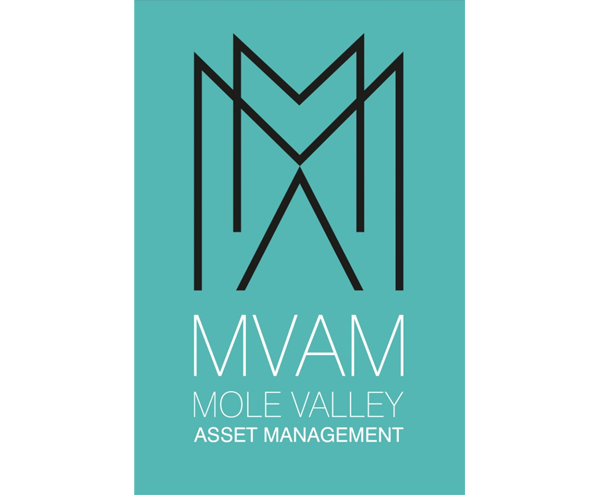
-
Min. account size
£50,000 -
Company type
Investment Manager -
Ownership
Private -
Size of wealth manager
Small -
Size
Boutique -
Founded
2013
Book a call with us
One of our team will give you a call at the time selected to discuss your situation and make the introduction to this Wealth Manager on your behalf.
Mole Valley Asset Management Factfile
Mole Valley Asset Management (MVAM) help you invest your savings by encouraging you to make conscious decisions about your money. They ensure information and opportunities are clear, transparent and easy to understand.
Based in Dorking, Surrey, they build bespoke investment portfolios to meet your future needs, working with investors large and small.
They ensure you get to know your Investment Manager, someone with experience and skills to invest directly into the markets and that you receive full access to them whenever you need.
Key person:

Andrew Holder
Finance Director/Portfolio Manager
Discretionary Investment Management
| Contact person | Investment Manager |
| Portfolio types | Model, bespoke |
| Composition | Direct |

-
Min. account size
£750,000 -
Company type
Private Bank -
Ownership
Part of a listed group -
Size of wealth manager
Global -
Size
Global -
Founded
1987
Book a call with us
One of our team will give you a call at the time selected to discuss your situation and make the introduction to this Wealth Manager on your behalf.
Nedbank Private Wealth Factfile
Nedbank Private Wealth is an award-winning boutique private bank that firmly believes in the mantra ‘don’t just plan to invest, invest to a plan’. As such, we deliver our wealth planning, investment management and private banking services to structure clients’ finances to ensure intergenerational wealth succession and philanthropic plans for legacies that stands the test of time.
Through its offices in London, Isle of Man, Jersey and Dubai, Nedbank provides a highly personalised, full-service wealth management offering. In the UK, Nedbank Private Wealth has been named best private bank for eight years running in the City of London Wealth Management awards – an accolade we take particular pride in given it is awarded ti the firm with the highest number of votes submitted by clients, professional partners and members of the public.
Nedbank Private Wealth can manage clients’ assets across jurisdictions, which is particularly helpful for international or UK resident non–domiciled clients.
Key person:

Stuart Cummins
Chief Executive Officer.
Discretionary
| Contact | Relationship Manager |
| Portfolio types | Bespoke |
| Composition | Mixed - Fund / Direct |
Financial Planning
| In-house service | |
| Pension advice | |
| Tax efficient investments | |
| How we charge | Flat fee / By the hour |
Lending
| Portfolio lending | |
| Mortgages (residential) | |
| Typical minimum mortgage | £250,000 |
| Other finance |
Other Services
| Retail banking | |
| Philanthropy |

-
Min. account size
£50,000 -
Company type
Investment Manager -
Ownership
Private -
Size of wealth manager
UK Wide -
Size
UK Wide -
Founded
2015
Book a call with us
One of our team will give you a call at the time selected to discuss your situation and make the introduction to this Wealth Manager on your behalf.
Netwealth Factfile
Netwealth is a UK-based wealth management company that provides a modern, award-winning investment and financial planning service, delivered by an established team of industry experts at substantially lower fees. We are based in central London and our senior team is led by former Goldman Sachs and J.P. Morgan executives.
The firm combines the best elements of a superior discretionary service with all the benefits of a technology enhanced approach. We have brought together a highly qualified team, a robust investment framework and a comprehensive offering. The entire Netwealth experience can be accessed online via powerful financial technology or, for those who prefer, with one of our financial advisers.
Our approach to wealth management brings several benefits to private clients:
- 1. Qualified financial advice available to help you plan for your unique circumstances
- 2. Seasoned investment management team, managing high-quality, diversified portfolios with a proven track record
- 3. A powerful client experience, both on and offline
- 4. ISAs, Pensions and General Investments Accounts available at significantly lower fees than the industry average
Key person:

Matt Conradi
Head of Client Advisory Team
Discretionary Investment Management
| Types of portfolio | Mixed portfolios, Sustainable / ethical portfolios |
| Composition | Equities, Exchange traded funds, Funds, Bonds |
| Min. account size | £5000 |
| Contact person | Relationship manager |
Financial Planning
| In-house service | |
| Inheritance Planning | |
| Retirement Planning | |
| Trusts | |
| Offshore Structures | |
| Fee structure | Included in account fee, Charge by hour, Flat fee per service |
Other Services
| Philanthropy |
-
Min. account size
£250,000 -
Company type
Investment Manager -
Ownership
Independent investment manager -
Size of wealth manager
National -
Size
UK Wide -
Founded
2022
Book a call with us
One of our team will give you a call at the time selected to discuss your situation and make the introduction to this Wealth Manager on your behalf.
Oakglen Wealth Limited Factfile
Oakglen Wealth is an independent investment manager, combining service orientated discretionary and advisory investment management.
As an independently owned and managed business, our clients are always the priority. We are committed to building enduring relationships, understanding individual needs and constructing strategies that help clients achieve exceptional outcomes. Through our distinctive network, our clients can access investment opportunities and innovative ideas not usually available to most investors.
Our highly personalised service is delivered by our experienced team and powered by the very latest technology.
Key person:

Eloise Rouse
Investment Manager - UK
Advisory Investment Management
| Contact | Investment Manager |
| Fees structure | Annual fee |
| Min. account size | £250,000 |
Discretionary Investment Management
| Contact | Investment manager |
| Portfolio types | Mixed, Sustainable / ethical portfolio |
| Composition | Equities, ETFs, Funds, Bonds |
Execution-only Investing
| Online dealing | |
| Timezones | US |
| Margin accounts |

-
Min. account size
£1,000,000 -
Company type
Investment Manager -
Ownership
Private -
Size of wealth manager
Small -
Size
Boutique -
Founded
1991
Book a call with us
One of our team will give you a call at the time selected to discuss your situation and make the introduction to this Wealth Manager on your behalf.
Odey Wealth Factfile
Odey believes that to generate strong long-term returns you need to think like an owner, know when to take risk and when to preserve capital and be ready to hold contrarian views. The Odey Group was established in 1991 and has carefully built a team of 40 investors who share this ‘owners' approach’ and today we manage c. $9bn for many of the world's leading investors. On the back of exceptional long-term performance, we launched Odey Wealth in 2007 to extend our investment services to private clients and today offer discretionary portfolio management from offices in London, Guernsey and Geneva.
Advisory Investment Management
| Contact person | Investment manager |
| Fee structure | Annual fee |
| Min. account size | £500,000 |
Discretionary Investment Management
| Contact person | Investment manager |
| Portfolio types | Model, bespoke |
| Composition | Fund, direct, tracker, mixture |
Execution-only Investing
| Online dealing | |
| Timezones | UK |
| Margin accounts |
-
Min. account size
£250,000 -
Company type
Financial Advisor -
Ownership
Private -
Size of wealth manager
Small -
Size
UK Wide -
Founded
2004
Book a call with us
One of our team will give you a call at the time selected to discuss your situation and make the introduction to this Wealth Manager on your behalf.
Partners Wealth Management Factfile
Partners Wealth Management (PWM) is a well-respected and multi award-winning City based independent financial advisory partnership which builds lifelong relationships with clients based on trust, providing leading whole-of-market investment solutions. We have a team of 90 plus people, consisting of 42 advisers with c. 2,000 clients, and over £2.2 billion of client assets under management. The firm achieved Chartered Status in 2018, demonstrating our commitment to our clients by continually focussing and raising standards of knowledge across the firm.
Key person:

James Roberts
Managing Partner
Advisory Investment Management
| Contact | Relationship Manager |
| Fee structure | Annual fee |
| Min. account size | £250,000 |
Financial Planning
| In-house service | |
| Pension advice | |
| Tax efficient investments | |
| How we charge | Flat fee / Per hour |

-
Min. account size
£5,000,000 -
Company type
Private Bank -
Ownership
Private -
Size of wealth manager
Medium -
Size
Global -
Founded
1805
Book a call with us
One of our team will give you a call at the time selected to discuss your situation and make the introduction to this Wealth Manager on your behalf.
Pictet Factfile
Pictet is one of Switzerland's leading private banks. Founded in 1805 today Pictet employs over 3000 staff in over 20 global offices. Its core services are wealth management and asset management. It has no investment banking division and carries out no commercial lending. The institution remains a partnership, with the eight partners carrying an unlimited liability.
Advisory Investment Management
| Contact person | Relationship manager |
| Fee structure | Annual fee |
| Min. account size | £5,000,000 |
Discretionary Investment Management
| Contact person | Relationship manager |
| Portfolio types | Model, bespoke |
| Composition | Fund, direct, tracker, mixture |
Financial Planning
| In-house service | |
| Pension advice | |
| Tax efficient investments | |
| How we charge | Within account fee |
Lending
| Portfolio lending | |
| Mortgages (residential) | |
| Typical minimum mortgage | |
| Other finance | Jet, yacht, art |
Execution-only Investing
| Online dealing | |
| Timezones | UK |
| Margin accounts |
Other Services
| Retail banking | |
| Ethical investing | |
| Philanthropy |
-
Min. account size
£100,000 -
Company type
Investment Manager -
Ownership
Private -
Size of wealth manager
Small -
Size
Boutique -
Founded
1893
Book a call with us
One of our team will give you a call at the time selected to discuss your situation and make the introduction to this Wealth Manager on your behalf.
Pilling & Co Factfile
Based in Manchester, Pilling & Co have offered Stockbroking and Portfolio Management Services for over 100 years. Our head office is named after our founder, Henry Pilling, who launched the firm in 1893. We are proud to offer a professional and friendly service to clients the four corners of the world and have developed excellent working relationships with many professional partners including Solicitors, Accountants and Independent Financial Advisors. Our aim is to help you achieve your investment goals with the minimum of fuss.
Advisory Investment Management
| Contact person | Investment manager |
| Fee structure | Annual fee |
| Min. account size |
Discretionary Investment Management
| Contact person | Investment manager |
| Portfolio types | |
| Composition | Fund, direct, tracker, mixture |
Financial Planning
| Out sourced | |
| Pension advice | |
| Tax efficient investments | |
| How we charge |

-
Min. account size
£500,000 -
Company type
Investment Manager -
Ownership
Private -
Size of wealth manager
Small -
Size
Boutique -
Founded
2007
Book a call with us
One of our team will give you a call at the time selected to discuss your situation and make the introduction to this Wealth Manager on your behalf.
Plurimi Wealth Factfile
Financial markets are changing the industry landscape. Clients now demand greater value and transparency from their financial advisors. Plurimi Wealth helps clients better achieve sustainable value through complete alignment. Plurimi Wealth maintains a transparent pricing structure charged through client-selected custodian banks; delivering greater value without an overlay of additional cost to the client.
Advisory Investment Management
| Contact person | Investment manager |
| Fee structure | Per trade, annual fee |
| Min. account size | £500,000 |
Discretionary Investment Management
| Contact person | Relationship manager |
| Portfolio types | Model, bespoke |
| Composition | Fund, direct, tracker, mixture, ethical |
Lending
| Portfolio lending | |
| Mortgages (residential) | |
| Typical minimum mortgage | £1,000,000 |
| Other finance | Jet, yacht, art |
Execution-only Investing
| Online dealing | |
| Timezones | UK, US, Asia |
| Margin accounts |

-
Min. account size
£100,000 -
Company type
Investment Manager -
Ownership
Private -
Size of wealth manager
Small -
Size
Boutique -
Founded
1986
Book a call with us
One of our team will give you a call at the time selected to discuss your situation and make the introduction to this Wealth Manager on your behalf.
Premier Asset Management Factfile
In today's complicated world, it’s a simple fact that we need to make our investments work as hard as possible to achieve our financial goals for our families. With world markets and economies constantly changing, it has never been more important to seek the help and guidance of investment professionals with the necessary expertise to help maximise returns and manage your risk. To make things simple, we offer a choice of five growth and three income portfolios. They are actively managed by a professional team with many years of experience managing client assets.
Advisory Investment Management
| Contact person | Investment manager |
| Fee structure | Annual fee |
| Min. account size | £50,000 |
Discretionary Investment Management
| Contact person | Investment manager |
| Portfolio types | |
| Composition | Fund, direct, tracker, mixture |

-
Min. account size
£250,000 -
Company type
Investment Manager -
Size
UK Wide
Book a call with us
One of our team will give you a call at the time selected to discuss your situation and make the introduction to this Wealth Manager on your behalf.
Punter Southall Wealth Factfile
Punter Southall Wealth is a Discretionary Fund Manager (DFM) offering investment solutions to private clients, charities, trusts and pension schemes. Launched in 2002 we now have over £3.9bn of client and corporate assets under control.
We are dedicated to providing real, risk-adjusted returns for our clients and this investment journey begins by agreeing what clients’ investment goals and objectives are. This is achieved through an open dialogue to ascertain objectives and set appropriate performance benchmarks.
Using dynamic asset allocation and being early adopters of a multi-asset approach, we provide investment portfolios that are constructed to deliver a return above inflation. We work with you to help determine the optimal mix of assets.
Punter Southall Wealth is part of the wider Canaccord Genuity Wealth Management (CGWM) group and as a result, we have access to a range of asset classes and geographies, including global equities and small caps, meaning investing with us gives you access to a broad range of investment management solutions. We continue to provide an exceptional investment experience. Today, CGWM looks after more than £32.1bn of assets, managed by highly experienced investment managers.
Key person:

Peter Seamer
Investment Director
Discretionary Investment Management
| Contact person | Investment manager |
| Portfolio types | Model, bespoke |
| Composition | Fund, direct, tracker, mixture |
Financial Planning
| In-house service | |
| Pension advice | |
| Tax efficient investments | |
| How we charge | Hourly, fixed |

-
Min. account size
£250,000 -
Company type
Investment Manager -
Ownership
Listed on stockmarket -
Size of wealth manager
Large -
Size
UK Wide -
Founded
1771
Book a call with us
One of our team will give you a call at the time selected to discuss your situation and make the introduction to this Wealth Manager on your behalf.
Quilter Cheviot Factfile
Quilter Cheviot has a heritage that can be traced back to 1771. We are one of the UK’s largest discretionary investment management firms, focusing on providing and managing bespoke investment portfolios for private clients, trusts, charities and pension funds. Our investment managers are committed to building long-term relationships with their clients, established on a foundation of exemplary personal service and investment expertise.
Key person:

Andrew McGlone
MD & Head of London Office
Advisory Investment Management
| Contact person | Investment manager |
| Fee structure | Annual fee |
| Min. account size | £200,000 |
Discretionary Investment Management
| Contact person | Investment manager |
| Portfolio types | Model, bespoke |
| Composition | Fund, direct, tracker, mixture, ethical |
Lending
| Portfolio lending | |
| Mortgages (residential) | |
| Typical minimum mortgage | |
| Other finance |
Other Services
| Retail banking | |
| Ethical investing | |
| Philanthropy |
-
Min. account size
£500,000 -
Company type
Wealth & Investment Management -
Ownership
Listed on stockmarket -
Size of wealth manager
Large -
Size
Global -
Founded
1742
Book a call with us
One of our team will give you a call at the time selected to discuss your situation and make the introduction to this Wealth Manager on your behalf.
Rathbones Factfile
Rathbones is one of the UK’s largest providers of bespoke investment and wealth management services for private clients. As a Group, we support individuals and families with a comprehensive range of services, including discretionary investment management, tax-efficient planning, financial planning, trusts, estate services, and limited banking services.
Our tradition of investing and acting responsibly has been with us from the beginning and continues to lead us forward.
Today, Rathbones serves clients from 23 locations across the UK and Channel Islands, managing £109.2 billion in assets on behalf of individuals and families (as at 31 December 2024).
Key person:

Perry Pearce
Wealth Planning Director
Discretionary Investment Management
| Portfolio types | Bespoke |
| Composition | Mixed, sustainable / ethical |
| Investment classes | UK and International Equities, ETFs, hedge funds, funds, bonds, structured products, private equity |
| Contact person | Investment manager |
Advisory Investment Management
| Min. account size | £500,000 |
| Contact person | Investment manager |
Financial Planning
| In-house service | |
| Services | Inheritance planning, retirement planning, trusts, offshore structures, tax planning, estate planning, life stage planning |
| Charging structure | Within account fee, flat fee per service |
Lending
| Portfolio lending |
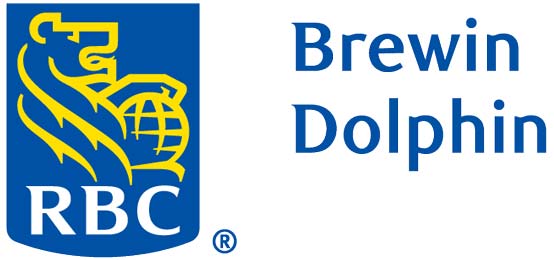
-
Min. account size
£500,000 -
Company type
Investment Manager -
Ownership
Listed on stockmarket -
Size of wealth manager
Large -
Size
UK Wide -
Founded
1762
Book a call with us
One of our team will give you a call at the time selected to discuss your situation and make the introduction to this Wealth Manager on your behalf.
RBC Brewin Dolphin Factfile
Having helped to build and preserve our clients’ wealth since 1762 we are well versed in working with individuals like you to help develop strategies that focus on what’s important, your needs, and those of your family.
With specialists located across the country we believe in the value of local relationships, whilst leaning on the strength of being one of the UK and Ireland’s leading wealth advisers.
The value of investments, and any income from them, can fall and you may get back less than you invested.
Key person:
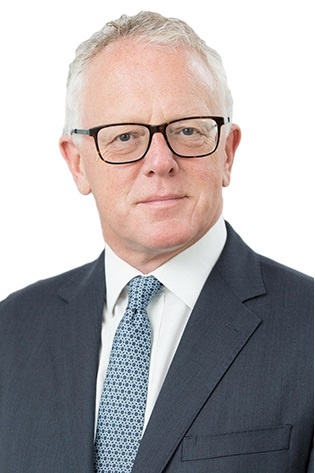
Andrew Wheeler
Head of Business Development
Discretionary Investment Management
| Portfolio types | Mixed portfolios, Sustainable / ethical portfolios |
| Composition | Equities, ETFs, Funds, Bonds, bonds, structured products, hedge funds, Private Equity, Derivatives |
| Min. account size | £250,000 |
| Contact person | Investment manager/Relationship manager |
Wealth Planning
| In-house service | |
| Retirement Planning | |
| Trusts | |
| Offshore Structures | |
| Financial Planning | |
| Wills | |
| How we charge | Included in account fee |

-
Min. account size
£1,000,000 -
Company type
Investment Manager -
Ownership
Part of a listed group -
Size of wealth manager
National -
Size
Global -
Founded
1811
Book a call with us
One of our team will give you a call at the time selected to discuss your situation and make the introduction to this Wealth Manager on your behalf.
Rothschild and Co Factfile
Rothschild & Co’s Wealth Management business provides a range of services to some of the world’s most successful families and entrepreneurs. We advise our clients on all their financial and non-financial wealth, constructing portfolios to grow in value over time, outpacing inflation and avoiding large losses along the way. Our ‘wealth preservation’ approach, coupled with the stability and independence that comes with two centuries of family-controlled ownership, makes us an enduring home for our clients’ assets.
Discretionary
| Portfolio types | Mixed, Sustainable / ethical portfolios |
| Composition | Equities, Funds, Bonds, Derivatives |
| Min. account size | £1m |
| Contact | Relationship manager |
Financial Planning
| Outsourced | |
| Inheritance Planning | |
| Pension | |
| Trusts | |
| Offshore Structures |
Lending
| Portfolio lending | |
| Mortgages (residential) | |
| Typical minimum mortgage | £1m |
| Other finance |
Execution-only Investing
| Timezones | UK/Europe |
Other Services
| Ethical Investing |

-
Min. account size
£1,000,000 -
Company type
Private Bank -
Ownership
Listed on stockmarket -
Size of wealth manager
Medium -
Size
Global -
Founded
1864
Book a call with us
One of our team will give you a call at the time selected to discuss your situation and make the introduction to this Wealth Manager on your behalf.
Royal Bank of Canada Factfile
RBC Wealth Management has been helping to build and preserve its clients’ wealth for more than 100 years. One of the world’s top 10 largest wealth managers, RBC Wealth Management offer the discipline, strength and stability of Canada’s largest bank. RBC has been named “Safest Bank in North America” and the tenth safest bank worldwide by Global Finance. Services include investment management, trust and estate planning, credit solutions, private banking, asset management and more.
Discretionary Investment Management
| Contact person | Relationship manager |
| Portfolio types | Model, bespoke |
| Composition | Fund, mixture, ethical |
Financial Planning
| In-house service | |
| Pension advice | |
| Tax efficient investments | |
| How we charge | Hourly, fixed |
Advisory Investment Management
| Contact person | Relationship manager |
| Fee structure | Per trade, annual fee |
| Min. account size | £2,000,000 |
Lending
| Portfolio lending | |
| Mortgages (residential) | |
| Typical minimum mortgage | £1,000,000 |
| Other finance |
Other Services
| Retail banking | |
| Ethical investing | |
| Philanthropy |
Execution Only Investing
| Online dealing | |
| Timezones | UK |

-
Min. account size
£500,000 -
Company type
Investment Manager -
Ownership
Partnership -
Size of wealth manager
£20bn -
Size
Boutique -
Founded
1994
Book a call with us
One of our team will give you a call at the time selected to discuss your situation and make the introduction to this Wealth Manager on your behalf.
Ruffer LLP Factfile
Ruffer has been providing investment management services for institutions, pension funds, charities, financial planners and private clients, in the UK and internationally since 1994.
Their preoccupation is with not losing money, rather than charging headlong for growth. It’s by putting safety first that they have made good money for their clients, successfully navigating three major market corrections – the dot.com bust, global financial crisis and covid-19.
In all they do, they seek to be responsible investors, integrating environmental, social and corporate governance (ESG) issues into their investment process.
Discretionary Investment Management
| Contact person | Investment manager |
| Portfolio types | Model |
| Composition | Fund, mixture, direct, ethical |

-
Min. account size
£500,000 -
Company type
Investment Manager -
Ownership
Owner manager -
Size of wealth manager
Small -
Size
Boutique -
Founded
2004
Book a call with us
One of our team will give you a call at the time selected to discuss your situation and make the introduction to this Wealth Manager on your behalf.
Saltus Investment Management Factfile
Saltus is an independently owned investment management company, established in 2004. Our objective is to preserve and grow wealth for our clients over time, irrespective of investing conditions, after tax, fees and inflation. We manage portfolios with no built in bias to any asset class and no fixed benchmark. Each portfolio is managed against a strict risk budget. We decide which asset class to invest in and implement this decision by selecting specialist managers who are world leaders in their chosen area of expertise. Our clients are private clients and family groups investing their pensions, trusts, investments and ISAs. We invest alongside our clients and would never do anything with your money that we do not do with our own.
Discretionary Investment Management
| Contact person | Investment manager |
| Portfolio types | Model, bespoke |
| Composition | Fund, direct, ethical |
Financial Planning
| In-house service | |
| Pension advice | |
| Tax efficient investments | |
| How we charge | Within account fee |
Execution-only Investing
| Online dealing | |
| Timezones | |
| Margin accounts |

-
Min. account size
£50,000 -
Company type
Investment Manager -
Ownership
Private -
Size of wealth manager
Small -
Size
Boutique -
Founded
2009
Book a call with us
One of our team will give you a call at the time selected to discuss your situation and make the introduction to this Wealth Manager on your behalf.
SCM Private Factfile
Founded in the aftermath of the 2008 financial crisis with a desire to offer UK investors simple and transparent investment solutions, SCM has an established five year track record of managing passive investment portfolios. Many of the smartest academic minds, experts, analysts and fund managers did not predict the large losses of the last financial crisis. So beginning with a blank sheet, reviewed everything, as well as taking into account human nature and concluded that the most common-sense way to invest involves a belt and braces approach that balances Cost, Risk and Returns.
Discretionary Investment Management
| Contact person | Investment manager |
| Portfolio types | Model |
| Composition | Trackers |
Other Services
| Retail banking | |
| Ethical investing | |
| Philanthropy |

-
Min. account size
£500,000 -
Company type
Wealth Managers -
Ownership
Part of Listed Company -
Size of wealth manager
Medium -
Size
UK Wide -
Founded
2002
Book a call with us
One of our team will give you a call at the time selected to discuss your situation and make the introduction to this Wealth Manager on your behalf.
Seven Investment Management (7IM) Factfile
Seven Investment Management is a modern, client-centric wealth manager. We work with individuals and families with investable assets of typically £500k and above. Many of our clients are entrepreneurs and business owners, as well as professional partners, who we work with throughout their careers, and retirement.
By truly understanding you and your priorities, we work with you to establish how to reach your financial goals. Combining our own expertise with that of trusted partners, you can have peace of mind that everything has been considered in order to effectively manage your wealth.
We know that your needs and circumstances are ever evolving, and that’s why a commitment to building a long term partnership is so important. Our business itself is a partnership model, ensuring our Private Client team’s interests are always aligned with yours.
We work with individuals and families with investable assets of typically £500k and above. Many of our clients are entrepreneurs and business owners, as well as professional partners, who we work with throughout their careers, and retirement.
Key person:

Jeremy Greenwood
Private Client Director
Discretionary Investment Management
| Contact person | Private Client Director |
| Portfolio types | Model, fund |
| Composition | Fund, mixture, ethical |
Financial Planning
| In-house service | |
| Pension advice | |
| How we charge | Within account fee |
Other Services
| Online retirement tool | |
| Portfolio lending | |
| Ethical investing |

-
Min. account size
£1,000,000 -
Company type
Wealth Managers -
Ownership
Private -
Size of wealth manager
Small -
Size
Boutique -
Founded
2001
Book a call with us
One of our team will give you a call at the time selected to discuss your situation and make the introduction to this Wealth Manager on your behalf.
SG Wealth Management Factfile
SG Wealth Management was founded in 2001, from the outset our conviction and ethos led us to promote a business model which was at the vanguard of positive change in investment management and financial services, voluntarily adopting a client-centric, advice-led proposition entirely free of commission bias. We take great care of your investment portfolio because we take great pride in caring for you as a client, our business success is founded upon it.
Discretionary Investment Management
| Contact person | Relationship manager |
| Portfolio types | Model, bespoke |
| Composition | Fund, tracker, mixture, ethical |
Advisory Investment Management
| Contact person | Relationship manager |
| Fee structure | Annual fee |
| Min. account size | £500,000 |
Financial Planning
| In-house service | |
| Pension advice | |
| Tax efficient investments | |
| How we charge | Within account fee |
Other Services
| Retail banking | |
| Ethical investing | |
| Philanthropy |

-
Min. account size
£3,000,000 -
Company type
Wealth Managers -
Ownership
Private -
Size of wealth manager
Small -
Size
Boutique -
Founded
2010
Book a call with us
One of our team will give you a call at the time selected to discuss your situation and make the introduction to this Wealth Manager on your behalf.
Signia Wealth Factfile
Signia is a wealth management firm specialising in strategic wealth management for individuals, families and trusts. At Signia, we put clients at the centre of everything we do. Our services are designed to make life easier for you. Our main objectives are not only preserving wealth but also growing it in a risk controlled way, maximising the real return on your assets. We will look to balance the long term goals ,around capital growth and income, with a sensible level of risk suitable for your circumstances. We also provide a range of complementary services aimed at catering for your broader financial needs.
Discretionary Investment Management
| Contact person | nvestment manager |
| Portfolio types | Model, bespoke |
| Composition | Fund, direct, tracker, mixture |
Financial Planning
| In-house service | |
| Pension advice | |
| Tax efficient investments | |
| How we charge |
Advisory Investment Management
| Contact person | Investment manager |
| Fee structure | Annual fee |
| Min. account size | £5,000,000 |
Execution-only Investing
| Online dealing | |
| Timezones | UK |
| Margin accounts |
Other Services
| Retail banking | |
| Ethical investing | |
| Philanthropy |

-
Min. account size
£50,000 -
Company type
Wealth Managers -
Ownership
Part of a listed group -
Size of wealth manager
Large -
Size
Global -
Founded
1991
Book a call with us
One of our team will give you a call at the time selected to discuss your situation and make the introduction to this Wealth Manager on your behalf.
St James’s Place Wealth Management Factfile
The St. James's Place Wealth Management Group offers a wide range of high quality wealth management services to businesses and individuals. With £150 billion funds under management, we are well established as one of the UK's leading wealth management organisations. At the heart of our business is the St. James's Place Partnership, which brings together some of the most experienced, able and highly-regarded professionals working in financial services, with an average of 17 years in the industry.
Advisory Investment Management
| Contact person | Relationship manager |
| Fee structure | Per trade, annual fee |
| Min. account size | £50,000 |
Financial Planning
| In-house service | |
| Pension advice | |
| Tax efficient investments | |
| How we charge | Within account fee |
Lending
| Portfolio lending | |
| Mortgages (residential) | |
| Typical minimum mortgage | |
| Other finance |
Discretionary Investment Management
| Contact person | Relationship manager |
| Portfolio types | Model, bespoke |
| Composition | Fund, direct, tracker, mixture |
Execution-only Investing
| Online dealing | |
| Timezones | |
| Margin accounts |
Other Services
| Retail banking | |
| Ethical investing | |
| Philanthropy |

-
Min. account size
£1,000,000 -
Company type
Private Bank -
Ownership
Part of a listed group -
Size of wealth manager
Small -
Size
Global -
Founded
2004
Book a call with us
One of our team will give you a call at the time selected to discuss your situation and make the introduction to this Wealth Manager on your behalf.
Standard Chartered Private Bank Factfile
Standard Chartered is an international financial institution with private and retail banking at the core of its services. Through their network of 1,700 branches, offices and outlets in more than 70 countries and they work closely with clients in local markets, with a particular slant towards the emerging markets of Africa and Indo-Asia.
Discretionary Investment Management
| Contact person | Relationship manager |
| Portfolio types | Model, bespoke |
| Composition | Fund, direct, tracker, mixture |
Advisory Investment Management
| Contact person | Relationship manager |
| Fee structure | Annual fee |
| Min. account size | £2,000,000 |
Financial Planning
| In-house service | |
| Pension advice | |
| Tax efficient investments | |
| How we charge | Within account fee |
Lending
| Portfolio lending | |
| Mortgages (residential) | |
| Typical minimum mortgage | |
| Other finance | Jet, yacht, art |
Execution-only Investing
| Online dealing | |
| Timezones | UK, US, Asia |
| Margin accounts |
Other Services
| Retail banking | |
| Ethical investing | |
| Philanthropy |

-
Min. account size
£100,000 -
Company type
Investment Manager -
Ownership
Part of a listed group -
Size of wealth manager
Medium -
Size
UK Wide -
Founded
2008
Book a call with us
One of our team will give you a call at the time selected to discuss your situation and make the introduction to this Wealth Manager on your behalf.
Standard Life Wealth Factfile
Founded in 2008 we are a discretionary investment manager totally focused on meeting our clients’ individual investment goals covering wealth preservation to wealth generation. We select funds and securities from the whole of the market and manage substantial investments for private clients, charities and pension schemes. We’ll work closely with our clients to understand their financial position and goals and how these may alter in the future. We look after investments across asset classes with the strategies suitable to achieving your personal objectives with pre-agreed risk parameters.
Discretionary Investment Management
| Contact person | Relationship manager |
| Portfolio types | Model, bespoke |
| Composition | Fund, direct, tracker, mixture |
Financial Planning
| In-house service | |
| Pension advice | |
| Tax efficient investments | |
| How we charge | Within account fee |
Advisory Investment Management
| Contact person | Relationship manager |
| Fee structure | Annual fee |
| Min. account size | £250,000 |
Execution-only Investing
| Online dealing | |
| Timezones | UK |
| Margin accounts |
Other Services
| Retail banking | |
| Ethical investing | |
| Philanthropy |

-
Min. account size
£1,000,000 -
Company type
Investment Manager -
Ownership
Private -
Size of wealth manager
Medium -
Size
Boutique -
Founded
1996
Book a call with us
One of our team will give you a call at the time selected to discuss your situation and make the introduction to this Wealth Manager on your behalf.
SYZ Factfile
Banque SYZ & Co's continued growth helps to confirm the quality of its private banking. SYZ & Co never forgets that a private bank's raison d'être is to deliver the best possible return on your assets in combination and considering the objectives you have set. We are asset management specialists and we focus on this target. It's all demonstrated by the results we have achieved in all market conditions and over extended periods. In fact we are so confident in our ability to ride financial storms that we link our fees to our performance.
Discretionary Investment Management
| Contact person | Relationship manager |
| Portfolio types | Bespoke, model |
| Composition | Fund, direct, tracker, mixture |
Advisory Investment Management
| Contact person | Relationship manager |
| Fee structure | |
| Min. account size | £1,000,000 |
Financial Planning
| In-house service | |
| Pension advice | |
| Tax efficient investments | |
| How we charge | Within account fee |
Lending
| Portfolio lending |

-
Min. account size
£250,000 -
Company type
Investment Manager -
Ownership
Part of a listed group -
Size of wealth manager
Medium -
Size
UK Wide -
Founded
1885
Book a call with us
One of our team will give you a call at the time selected to discuss your situation and make the introduction to this Wealth Manager on your behalf.
Thomas Miller Factfile
Part of the Thomas Miller Group that was formed in 1885, Thomas Miller Investment has a rich history of high quality investment management spanning many years and today we are a leading investment manager for private and institutional clients. We specialise in outcome based, longer-term investment strategies focused around the investment objectives of each client. We offer tailored investment solutions for UK and internationally based clients through both onshore and offshore discretionary investment management services.
Discretionary Investment Management
| Contact person | Investment manager |
| Portfolio types | Bespoke, model |
| Composition | Fund, direct, tracker, Mixture, Ethical |
Advisory Investment Management
| Contact person | Investment manager |
| Fee structure | Annual fee |
| Min. account size | £250,000 |
Financial Planning
| In-house service | |
| Pension advice | |
| Tax efficient investments | |
| How we charge |

-
Min. account size
£50,000 -
Company type
Wealth Managers -
Ownership
Private -
Size of wealth manager
Large -
Size
UK Wide -
Founded
1836
Book a call with us
One of our team will give you a call at the time selected to discuss your situation and make the introduction to this Wealth Manager on your behalf.
Tilney Group Factfile
Tilney Group is a large financial planning and investment company that builds on a heritage of more than 180 years. With wealth managers and investment advisers operating in nearly 40 locations across the UK, they currently manage over £20 billion for their clients.
Discretionary Investment Management
| Contact person | Investment manager |
| Portfolio types | Model, bespoke |
| Composition | Fund, tracker, mixture |
Advisory Investment Management
| Contact person | Investment manager |
| Fee structure | Annual fee |
| Min. account size | £50,000 |
Financial Planning
| In-house service | |
| Pension advice | |
| Tax efficient investments | |
| How we charge | Within account fee |
Execution-only Investing
| Online dealing | |
| Timezones | UK |
| Margin accounts |

-
Min. account size
£1 -
Company type
Investment Manager -
Ownership
Private -
Size of wealth manager
National -
Size
UK Wide -
Founded
2016
Book a call with us
One of our team will give you a call at the time selected to discuss your situation and make the introduction to this Wealth Manager on your behalf.
Tribe Impact Capital Factfile
Tribe is the UK’s first dedicated impact wealth manager. Tribe was created in response to a significant increase in demand from wealth holders wanting to achieve financial returns and also to bring about positive change for people and planet. We offer discretionary investment management services through the construction of diversified, multi-asset portfolios which are risk managed and aligned to each client’s impact preferences. We’re a certified and award-winning B Corp, a global movement that believe business can be a force for good.
Key person:

James Marti
Partner
Advisory Investment Management
| Contact person | Investment manager |
| Portfolio Types | Equities, Funds, Commodities, ETFs, bonds, Derivatives, Private Equity |
| Min. account size | £1,000,000 |
| Fee structure | Transactional |
Discretionary Investment Management
| Contact person | Investment manager |
| Portfolio types | Model, bespoke |
| Portfolio Composition | Fund based, Direct securities, mixed porfolios, sustainable / ethical |
| Investment classes | Equities, ETFs, funds, bonds, structured products |
Other Services
| Philantrophy | |
| Ethical investing |

-
Min. account size
£250,000 -
Company type
Wealth Managers -
Ownership
Owner Manager -
Size of wealth manager
Small -
Size
Boutique -
Founded
2017
Book a call with us
One of our team will give you a call at the time selected to discuss your situation and make the introduction to this Wealth Manager on your behalf.
Tyndall Investment Management Factfile
Tyndall Investment Management was founded in 2017 by a small team of experienced and like-minded investors, seeking a better way to look after their clients.
We are owner-managed, giving us the freedom to invest against the crowd, and to restrict the number of clients we take on to a manageable number. We currently look after 120 families, investing our own capital alongside theirs.
We are investors at heart, passionate about the power of personal relationships and old-fashioned service, and we are 100% focused on the long-term.
Key person:

Edward Allen
Investment Manager
Discretionary
| Contact | Investment Manager |
| Portfolio types | Model / Bespoke |
| Composition | Mixed investments |
Financial Planning
| Outsourced | |
| Pension advice | |
| Tax efficient investments | |
| How we charge | Flat fee / by the hour |

-
Min. account size
£5,000,000 -
Company type
Private Bank -
Ownership
Listed on stockmarket -
Size of wealth manager
Large -
Size
Global -
Founded
1865
Book a call with us
One of our team will give you a call at the time selected to discuss your situation and make the introduction to this Wealth Manager on your behalf.
UBS Factfile
UBS were awarded 'Best Private Banking Services Overall 2019' by Euromoney. At UBS, a dedicated Client Advisor will seek out the specialist expertise and resources needed to help you achieve your goals, allowing you to benefit from the network and specific skills of UBS, one of the world's leading wealth managers. UBS offers a complete range of investment services, personalised to your individual needs.
Key person:
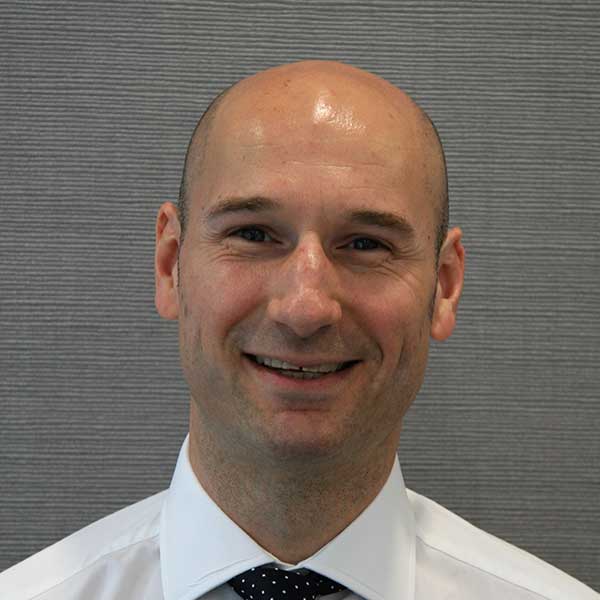
Mark Goddard
Head of High Net Worth, London
Discretionary Investment Management
| Contact person | Relationship manager |
| Portfolio types | Model, bespoke |
| Composition | Fund, tracker, mixture, ethical |
Financial Planning
| In-house service | |
| Pension advice | |
| Tax efficient investments | |
| How we charge | Within account fee |
Advisory Investment Management
| Contact person | Relationship manager |
| Fee structure | Per trade, annual fee |
| Min. account size | £5,000,000 |
Lending
| Portfolio lending | |
| Mortgages (residential) | |
| Typical minimum mortgage | £1,000,000 |
| Other finance | Jet, yacht, art |
Execution-only Investing
| Online dealing | |
| Timezones | UK, US, Asia |
| Margin accounts |
Other Services
| Retail banking | |
| Ethical investing | |
| Philanthropy |
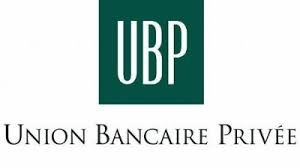
-
Min. account size
£1,000,000 -
Company type
Private Bank -
Ownership
Private -
Size of wealth manager
Large -
Size
Global -
Founded
1969
Book a call with us
One of our team will give you a call at the time selected to discuss your situation and make the introduction to this Wealth Manager on your behalf.
Union Bancaire Privee (UBP) Factfile
Union Bancaire Privée’s Private Banking specialists provide comprehensive advice to a sophisticated and international clientele. Founded in 1969 by Edgar de Picciotto, UBP specialises in private banking and asset management. With a Tier-1 capital ratio of 28%, it is one of the most strongly capitalised, independent private banks. At UBP we are dedicated to a single goal: providing outstanding investment solutions focused on capital preservation and strong performance. Our wealth and estate planning specialists are available to private clients who want to ensure wealth protection and see their wealth grow, confident in the knowledge that they are in safe hands. With our head office in Switzerland and offices around the world in Europe, Asia and the Americas, UBP are well placed to provide a high level of service.
Discretionary Investment Management
| Contact person | Relationship manager |
| Portfolio types | Model, bespoke |
| Composition | Fund, direct, tracker, mixture |
Financial Planning
| In-house service | |
| Pension advice | |
| Tax efficient investments | |
| How we charge |
Advisory Investment Management
| Contact person | Relationship manager |
| Fee structure | Annual fee |
| Min. account size | £500,000 |
Lending
| Portfolio lending | |
| Mortgages (residential) | |
| Typical minimum mortgage | |
| Other finance | Jet, yacht, art |
Execution-only Investing
| Online dealing | |
| Timezones | UK, US, Asia |
| Margin accounts |
Other Services
| Retail banking | |
| Ethical investing | |
| Philanthropy |

-
Min. account size
£100,000 -
Company type
Wealth Managers -
Ownership
Listed on stockmarket -
Size of wealth manager
Medium -
Size
UK Wide -
Founded
1914
Book a call with us
One of our team will give you a call at the time selected to discuss your situation and make the introduction to this Wealth Manager on your behalf.
Walker Crips Factfile
Walker Crips predecessors first bought and sold shares for clients on the London Stock Exchange in 1914. Through acquisitions, the company can now trace its roots as far back as the 18th century, making it one of the City of London's oldest independent companies. A holistic wealth management service with life stage planning to suit client's needs, their financial planning process is complemented by investment management solutions.
Discretionary Investment Management
| Contact person | Investment manager |
| Portfolio types | Model, bespoke |
| Composition | Fund, direct, tracker, mixture |
Advisory Investment Management
| Contact person | Investment manager |
| Fee structure | Annual fee |
| Min. account size | £100,000 |
Financial Planning
| In-house service | |
| Pension advice | |
| Tax efficient investments | |
| How we charge | Within account fee |
Execution-only Investingn
| Online dealing | |
| Timezones | UK |
| Margin accounts |

-
Min. account size
£500,000 -
Company type
Investment Manager -
Ownership
Private -
Size of wealth manager
Medium -
Size
Boutique -
Founded
1986
Book a call with us
One of our team will give you a call at the time selected to discuss your situation and make the introduction to this Wealth Manager on your behalf.
Waverton Investment Management Factfile
Waverton (formally J O Hambro Investment Management) was founded in 1986 and is an independent owner-managed boutique. Since its inception Waverton has grown organically, attracting some of the most experienced investment managers to join its team. Our investment team covers all aspects of discretionary portfolio management with private clients being the bedrock of our business. Waverton was established specifically to provide private individuals with an investment service which seemed to be rarely available: a dedicated personal investment service from talented individual experts.
Discretionary Investment Management
| Contact person | Investment Manager |
| Portfolio types | Model, bespoke |
| Composition | Fund, direct, tracker, mixture |

-
Min. account size
£100,000 -
Company type
Wealth Managers -
Ownership
Listed on stockmarket -
Size of wealth manager
Medium -
Size
UK Wide -
Founded
1872
Book a call with us
One of our team will give you a call at the time selected to discuss your situation and make the introduction to this Wealth Manager on your behalf.
WH Ireland Factfile
WHIreland has a long history of working with and managing the wealth of a diverse range of private, charity, corporate and institutional clients. Our firm belief is to build long-term relationships based on trust whilst placing our clients’ needs at the centre of everything we do.
From our presence across the United Kingdom and internationally in the Isle of Man, our investment experts will work with you, and where appropriate your advisers, to fully understand your investment requirements. They are focused on providing a jargon-free service no matter how you wish your wealth to be managed.
Discretionary Investment Management
| Contact person | Investment manager |
| Portfolio types | Model, bespoke |
| Composition | Fund, direct, tracker, Mixture, Ethical |
Advisory Investment Management
| Contact person | Investment manager |
| Fee structure | Annual fee |
| Min. account size |
Financial Planning
| Third Party | |
| Pension advice | |
| Tax efficient investments | |
| How we charge | Within account fee |